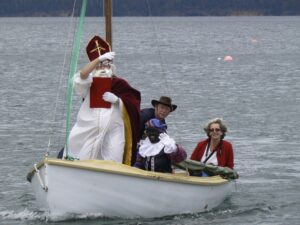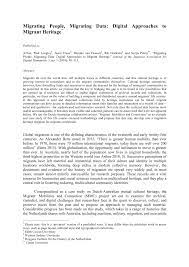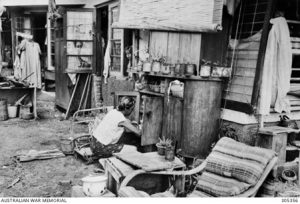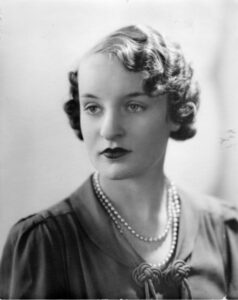
Elva Mary Bennett, Gerk van der Land and a family at war
This article is based on personal documents, military records and a recorded wartime interview provided by Elva Mary Bennett’s son, Russ Morison, together with supporting Australian and Dutch archival sources. The wartime history of the Bennett–van der Land–Morison family connects Australia, the Netherlands, the Netherlands East Indies, Burma and the
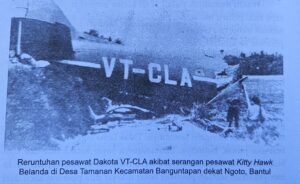
Foreign pilots, Dutch blockades and the Indonesian air war: the Jogja incident of 29 July 1947
Introduction During the Indonesian Revolution (1945–1949), the struggle between the newly proclaimed Republic of Indonesia and the returning Dutch colonial authorities was fought not only on land and through diplomacy, but also in the air. Less well known is the decisive role aviation played in sustaining the Republican cause under
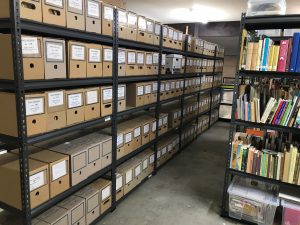
DACC archive digitisation moves into active implementation
The Dutch Australian Cultural Centre (DACC) has reached an important milestone in the long-term preservation of Dutch-Australian heritage. After several years of preparation, planning and infrastructure development, the DACC Archive Digitisation Project has moved from concept to active implementation. Preserving a unique national archive Since its foundation in 1983, the
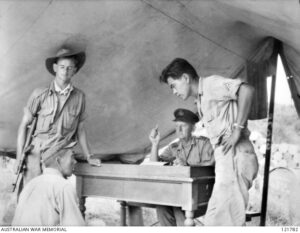
Australian war crimes investigators killed near Jakarta, April 1946
A little-known episode of Dutch–Australian post-war cooperation IntroductionIn the chaotic months after the Japanese surrender in August 1945, the Netherlands East Indies entered a turbulent and violent transition. The return of Dutch administrative and military forces coincided with the rise of the Indonesian independence movement and a widespread collapse of
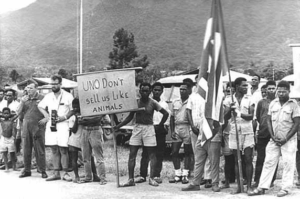
From self-rule to suppression: the fate of West Papuan independence and Australia’s ambivalent role, 1962–63
The transfer of Dutch New Guinea to Indonesian control in 1963 marked the abrupt end of one of the most promising experiments in decolonisation in the Pacific. During the late 1950s and early 1960s, the Netherlands had begun preparing the Papuan people for a future of self-government, establishing representative institutions
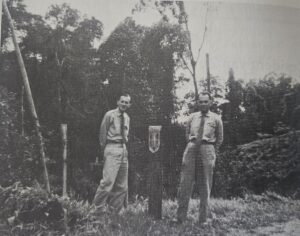
The Dutch Resident of Merauke visits Australian Papua New Guinea
In the early 1950s, Resident Karel Knödler of South New Guinea crossed the frontier into Australian-administered Papua New Guinea. His visit offers a rare first-hand Dutch view of daily life and administration across the colonial border that once divided the island. A cordial exchange across the frontier Karel Knödler had
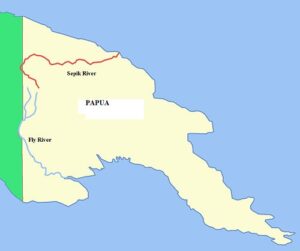
Defining a frontier: Dutch–Australian border cooperation in New Guinea, 1954–1960
In the decade following the Second World War, the Netherlands and Australia shared the vast island of New Guinea as neighbouring colonial powers. The western half, Netherlands New Guinea (DNG), remained under Dutch administration, while the eastern half, the Territory of Papua and New Guinea (TPNG), was administered by Australia
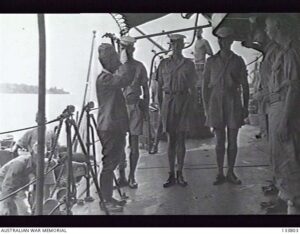
Australia’s surrender expedition in New Guinea, 1945: the Dutch connection at Sarmi
In September 1945, as Japan’s capitulation brought the Second World War to an end, Australia was tasked with overseeing the surrender of tens of thousands of Japanese troops scattered across the islands of New Guinea and the Netherlands East Indies. These operations were not limited to Australian territories. In neighbouring
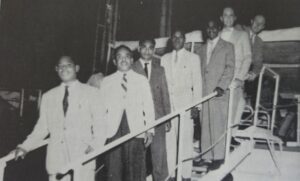
Dutch–Australian cooperation in the Pacific, 1947–1962
From 1947 to 1962, the Netherlands and Australia both belonged to the same regional organisation, the South Pacific Commission (SPC). The Commission was created by the Canberra Agreement of 1947, signed by six administering powers with dependent territories in the Pacific: Australia, New Zealand, the United Kingdom, France, the United
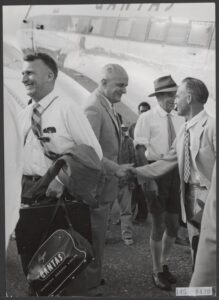
Bridging Borders: The Dutch–Australian Conference on Joint Development Policy for New Guinea, 1959–60
In the final years of Dutch administration in New Guinea, the Netherlands and Australia sought to establish a common development policy across the island. These conferences, held between 1959 and 1960, symbolised an ambitious vision of regional cooperation in health, education, infrastructure and administration. Yet they were also shaped by
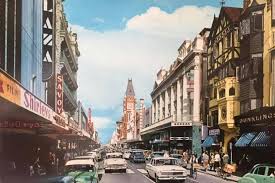
The Dutch Consulate in Perth – 1950/1960
Introduction This article was written by Pieter Robert (Robby) Boele van Hensbroek (1920–2011), a former officer of the Royal Netherlands Navy who migrated to Australia in 1951. He remained deeply engaged in Dutch community affairs through the Netherlands Ex-Servicemen and Women’s Association (NESWA) and contributed a number of personal recollections
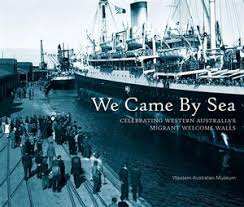
Catalogue List: Peters, Nonja (SLWA)
This document contains the catalogue items associated with Dr Nonja Peters from the State Library of Western Australia (SLWA). Below the pdf is a searchable list of titles, interviewees/subjects, and years to make it easier for search engines to find names and titles. A more readable full catalogue see the
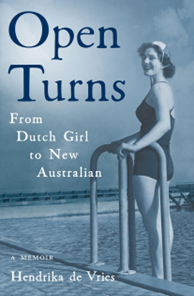
From war-torn Amsterdam to champion in Adelaide: the story of Hendrika de Vries
In a story that crosses borders, generations, and identities, Hendrika de Vries embodies the resilience of Dutch migrants who forged new lives in Australia after the Second World War. Her journey—from the trauma of Nazi-occupied Amsterdam to becoming South Australia’s swimming champion in 1955—is a testament to courage, adaptability, and
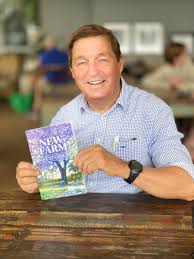
Toast, Motorbikes and Memories: Dutch Life at Roseville (Brisbane) in the 1950s
The following is a chapter from the book “New Farm 50 Stories” by Gerard Benjamin, a longtime resident in Newstead who has been associated with the New Farm and Districts Historical Society for more than 20 years. He regularly conducts history walks in the area and is the author of
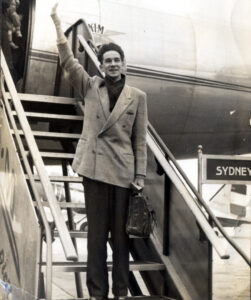
Jan and Toos Janssens: A life of family, migration, and memory
The story of Jan (Johannes Wilhelmus Theodorus) and Toos (Catharina) Janssens is a vivid reflection of the Dutch migrant experience in Australia after the Second World War. Together, their recollections offer a rare and intimate portrait of growing up in the Netherlands during the turbulent 1930s and 1940s, the challenges
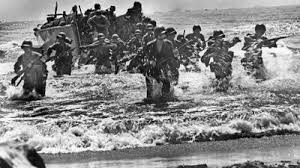
Going North: award winning Dutch WWII documentary of the landing on the Philippine island of Leyte.
Going North is a fine example of a classic Allied propaganda film from the Second World War. It tells the story of the massive force moving from the southern Pacific towards Japan — heading north. With imposing images, pompous music and a sharp commentary voice, the film leaves no doubt

Betrayed and beheaded: the story of Rob Hees and NEFIS Party Lion
English introduction for the Dutch PDF below This Dutch-language document, De verkenningsmissie, Party Lion, van Rob Hees (1901–1942), details the story of Rob Hees, a reserve first lieutenant in the KNIL and civil engineer, who escaped from the Netherlands East Indies to Australia in 1942. It describes his recruitment into
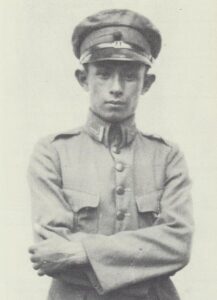
Hendrik Johan de Haas – Dutch officer in NEFIS special operations
Hendrik Johan de Haas was born in Batavia (now Jakarta) on 28 November 1904, the son of Jozef Hendrik de Haas and Johanna Frederika Susanna Jostein. He married Hendrina Maria van der Meer Mohr in Batoeroesa on 2 January 1911. The couple had two children: Robert Johan (born 28 December

Dutch and Indonesian refugees in Australia from the Netherlands East Indies, 1942–1946
By Dr Nonja Peters This paper examines the complex experiences of Dutch, Eurasian, and Indonesian evacuees who fled the Japanese occupation of the Netherlands East Indies during the Pacific War and found temporary refuge in Australia. Drawing on archival sources and eyewitness accounts, it explores their reception, living conditions, and
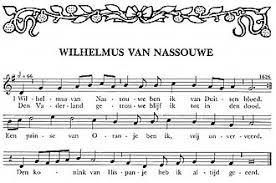
Dutch squadron choir in wartime Australia: voices of resilience and diplomacy
When the Netherlands East Indies (NEI) collapsed under Japanese attack in early 1942, hundreds of Dutch airmen, sailors, and soldiers found themselves in Australia. Among the many military units reconstituted there was the 18 (Netherlands East Indies) Squadron of the Royal Australian Air Force (RAAF), a unique Dutch–Australian squadron flying

Tiwi resistance and Dutch contact: an early act of Indigenous unity- 1705
In 1705, the Dutch East India Company (VOC) launched an exploratory expedition to the Tiwi Islands, north of Arnhem Land in what is now the Northern Territory of Australia. The expedition, led by Commander Maerten van Delft, was one of several early attempts by the Dutch to chart the coastline
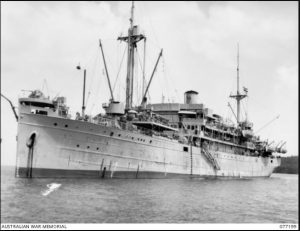
Convoy ZK8: Dutch ships deliver Australia’s troops to the front
In May 1942, the Allied war effort in the Pacific reached a critical turning point. The fall of the Netherlands East Indies (NEI) had left Australia exposed, and Japanese forces were advancing toward Port Moresby. In this tense context, a unique and largely forgotten military operation unfolded: Convoy ZK8, an

Operation Accountant: safeguarding Dutch gold in exile
In early 1942, as Japanese forces overran the Netherlands East Indies (NEI), Dutch authorities faced the urgent task of preserving their financial and sovereign assets. Among the most critical was the colony’s reserve of gold bullion—essential not just for wartime logistics, but for sustaining the legitimacy of the Dutch government-in-exile
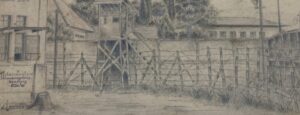
Japanese internees and Dutch migrants: the story of the Lawant family
During the Second World War, the Japanese occupation of the Netherlands East Indies (now Indonesia) led to the internment of tens of thousands of Dutch civilians. Among them were Catharinus Lawant, his wife Maria, and their daughter Martina. Their story—documented through personal sketches and migration records—offers a window into a

Dutch–Australian wartime cooperation: a six-part series
This series is a tribute to Dr. Jack Ford who passed away in June 2025 Symposium: Allied co-operation in Brisbane during WWII: Australia, USA, Netherlands, UK – 30–31 August 2025 at UQ- Bus Tour Brisbane WWII sites – 1 September More info. This article series explores the evolving relationship between

From indifference to diplomacy: how the war transformed Dutch–Australian foreign relations
Before the Second World War, the relationship between Australia, the Netherlands and the Netherlands East Indies (NEI) was marked by cordial distance rather than active diplomacy. There were no embassies , no treaties of alliance, and few direct communications between the two governments. Australia’s foreign affairs were largely managed through

Reform or restoration? Political tensions over the future of the Netherlands East Indies during wartime exile
Following the Japanese invasion and collapse of the Netherlands East Indies (NEI) in early 1942, Dutch political and military leadership scattered across the globe. Many civil and military authorities regrouped in Australia and Ceylon, while the central government-in-exile remained in London. Amid the chaos, a major political fault line emerged

Divided in exile: tensions between Batavia and London in the Dutch war effort in NEI
The collapse of the Netherlands under German occupation in May 1940 left its overseas empire, particularly the Netherlands East Indies (NEI), to operate with significant autonomy. Based in Batavia, the colonial administration continued to govern its territories while the Dutch government-in-exile established itself in London. As the war progressed, tensions
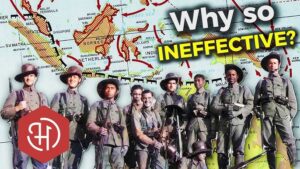
Between secrecy and survival: Australia’s frustration with Dutch neutrality on the eve of war
In the months leading up to the Pacific War, the Netherlands East Indies (NEI) attempted to balance neutrality with quiet resistance to Japan. But to Australian officials, this stance seemed naïve—and potentially dangerous. As early as November 1941, the Australian government was growing concerned that the Dutch in Batavia were
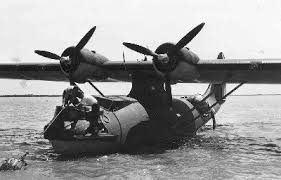
From Pearl Harbor to Broome: Dutch seaplanes and the shifting tides of the Pacific War
In the early hours of 7 December 1941, Japanese aircraft launched a surprise attack on Pearl Harbor, drawing the United States into the Second World War. Among the many casualties at the nearby Kaneohe Bay Naval Air Station was a lesser-known victim: Dutch Catalina flying boat Y-68, belonging to the
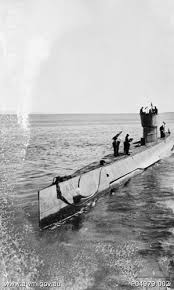
Dutch submarine tactics in Allied strategy: ignored, copied, and overshadowed – WWII
During the desperate early months of the Pacific War, Allied cooperation in Southeast Asia was marked by confusion, mismatched priorities, and poor coordination. Dutch naval forces, particularly the Royal Netherlands Navy (RNN) submarine fleet based in the Netherlands East Indies (NEI), played a critical role in resisting the Japanese advance.
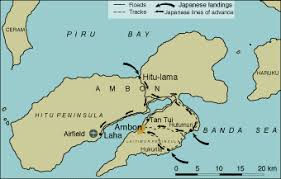
Dutch parochialism and the fall of Ambon: a difficult moment in Dutch–Australian wartime cooperation
The short-lived Allied defence of Ambon in early 1942 is remembered in Australia as one of the most tragic military episodes of the Pacific War. The Battle of Ambon with the near-annihilation of the Australian 2/21st Battalion (‘Gull Force’) and the subsequent Japanese massacre of prisoners at Laha remain seared
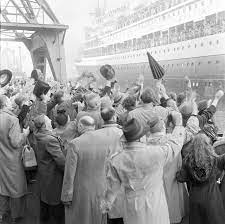
Dutch migrants and their parents back home: caring from a distance
This chapter, co-authored by Loretta Baldassar, Raelene Wilding, and Cora Baldock, forms part of a larger Australian Research Council–funded study examining transnational caregiving among migrant families. Focusing on Dutch migrants in Perth, Western Australia, and their ageing parents in the Netherlands, the chapter explores how families maintain emotional bonds and
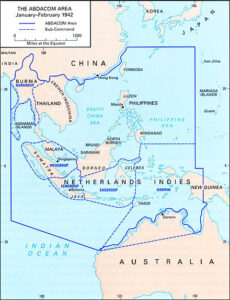
Unchained interests: A Dutch perspective on the failure of ABDACOM
This in-depth military study by Major Rene W. A. van den Berg of the Royal Netherlands Army explores the rise and rapid collapse of the American-British-Dutch-Australian Command (ABDACOM), the first multinational Allied command in the Pacific during WWII. Often overlooked in mainstream histories, the Netherlands East Indies played a central
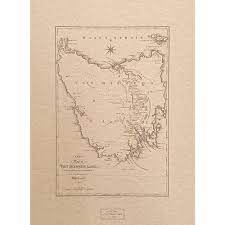
Tasmania on the Map 1856
By Peter Reynders First published by the Dutch Courier in July 2025 With the recent name change of the Mexican Gulf, it became even more interesting to me to look at the process of some of the geographical name changes in history. In that case the name known in Latin
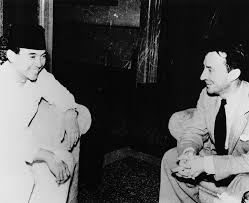
Australia, the Dutch, and Indonesia’s Independence: A pivotal year revisited through Diplomasi 1947
In 1994, the Australian Government Publishing Service released a remarkable volume titled Diplomasi: Australia & Indonesia’s Independence. Documents 1947, edited by political analyst and public servant Dr Philip Dorling. This collection of declassified documents sheds new light on a transformative year in Australian foreign policy—one that placed Australia in the
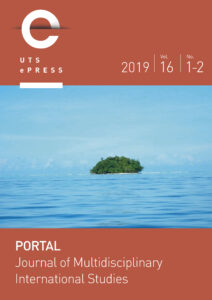
Reframing Dutch–Australian history through the lens of Asia-Pacific decolonisation
In reviewing the article Ripples of Decolonisation in the Asia-Pacific by Charles Hawksley and Rowena Ward (2019), I was struck by how closely its themes intersect with lesser-known Dutch–Australian wartime and postwar connections. While the article does not focus on Dutch-Australian relations per se, it provides valuable context for understanding
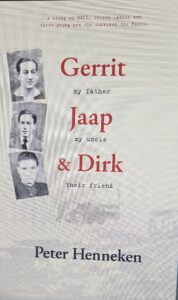
Gerrit, Jaap and Dirk: A Story of WWII, Forced Labour and Survival
In 1943, three young Dutch men—Gerrit Henneken (19), his brother Jaap (18), and their friend Dirk Keijzer (19)—became part of the millions of men and women subjected to forced and enslaved labour in Nazi Germany. What followed was a harrowing tale of hardship, endurance, and ultimately, liberation by the American
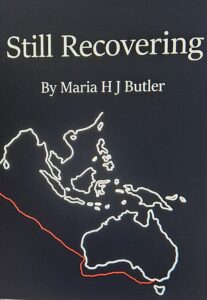
Still Recovering: A Dutch Childhood in Queenscliff – by Maria H.J. Butler
Still Recovering by Maria H.J. Butler is a poignant and personal memoir that offers a unique insight into the post-war Dutch migrant experience in Australia. The book captures the childhood memories of a Dutch, Catholic, New Australian girl growing up in Queenscliff, Victoria. Maria was born in Gouda, the Netherlands,

The Baker’s Son: The Story of Henk van Iersel – Resistance Fighter, Migrant, and Musician
The story of Dutch migration to Australia is filled with personal journeys of courage, resilience, and community spirit. Among these is the remarkable life of Henk (Hank) van Iersel, a man who stood against oppression during the dark years of World War II and later sought a new future for
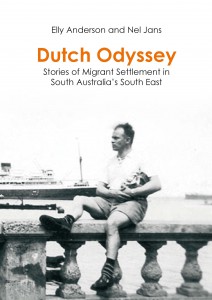
Dutch Odyssey: A Collective History of Migration to South East Australia
Dutch Odyssey is a collective history of Dutch migration, based on the experiences of families who settled in the South East of South Australia from the late 1940s onwards. The authors spent five years gathering stories from first and second generation migrants and expanded their research by consulting archives to
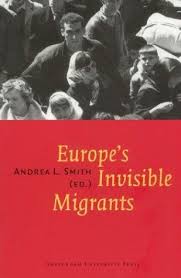
No Sheltering Sky: Migrant Identities of Dutch Nationals from Indonesia
Wim Willems, Institute for Migration and Ethnic Studies, The Netherlands In this chapter, in the book: Europe’s invisible migrants “No Sheltering Sky: Migrant Identities of Dutch Nationals from Indonesia” by Wim Willems, delves into the complex postwar migration and settlement experiences of Dutch nationals from Indonesia, focusing on their journeys

The Diary of Gerard Rhee – one the first Dutch migrants to Tasmania – 1940
The diary of G Rhee is quite unique because it was written in 1940. Gerard Rhee was one of the first Dutch migrants to Tasmania. There are interesting glimpses in this diary of a young man who fell in love with a local lass. Apart from notes about his courting,
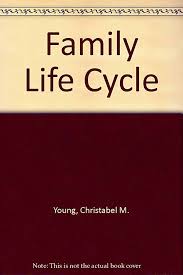
The Demography of the Dutch in Australia by Christabel Young
Christabel Young’s chapter offers a comprehensive demographic analysis of Dutch migration to Australia, tracing the development of the Netherlands-born population and their Australian-born descendants across several decades. Drawing on census data, birth/death records, immigration statistics, and health studies, Young provides an insightful account of the integration, transformation, and demographic profile
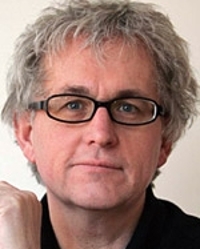
Breaking Down the White Walls: The Dutch from Indonesia
Introduction: Identity, Visibility, and Community Wim Willems’ chapter explores the neglected story of Dutch Eurasians—people of mixed Dutch and Indonesian descent—who migrated to Australia from the former Dutch East Indies (Indonesia) after World War II. The narrative begins with the landmark 1996 De Andere Nederlanders exhibition at the Dutch Consulate-General
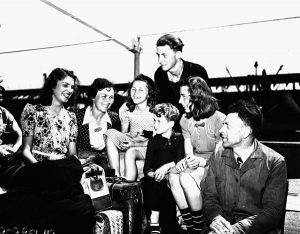
A Dutch Home in Australia: Dutch Women’s Migration Stories
By Wendy Walker-Birckhead This ethnographic study by Wendy Walker-Birckhead focuses on the migration experiences of Dutch women to Australia during the post-World War II period. Drawing on 48 case studies, it explores how migration has been understood and lived differently by Dutch men and women. While male narratives often frame

Older Dutch Migrants in Australia: Health and Life Style in Old Age
By Wendy Walker-Birckhead This ethnographic study by Wendy Walker-Birckhead explores the lived experiences, health perceptions, and lifestyle practices of older Dutch migrants in Australia. The chapter draws from qualitative interviews with 19 Dutch-Australians—11 first-generation migrants and 8 adult children—to understand how migration, cultural identity, and ageing intersect in later life.
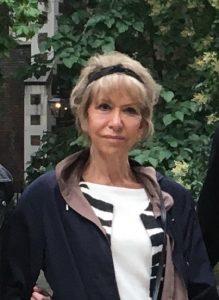
The Enterprising Dutch by Nonja Peters
Nonja Peters’ comprehensive chapter The Enterprising Dutch analyses the occupational adjustment and entrepreneurial activities of Dutch migrants in Western Australia after World War II, examining their transition from wage labour to self-employment. The study spans three distinct groups: first-generation postwar migrants (1947–1975), their Australian-born or raised children (second generation), and
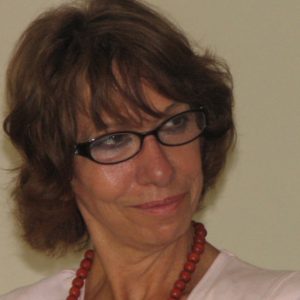
Milk and Honey – But No Gold: Postwar Migration to Western Australia 1945–1964
By Dr Nonja Peters In Milk and Honey – But No Gold, Dr Nonja Peters provides one of the most comprehensive accounts of postwar migration to Western Australia, with a particular focus on the Dutch and other European migrant communities. Based on archival research, oral history interviews, and personal observation,
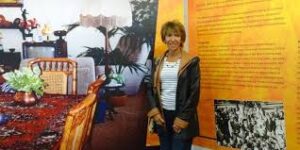
Selling a Dream: Expectation Versus Reality – Post-war Dutch and Other Migration to Australia 1945–1970
In this 2012 paper published in the AEMI Journal, Dr. Nonja Peters examines the migration experiences of approximately 160,000 Dutch individuals who relocated to Australia following World War II. The study delves into how various factors—local, national, and global influences, as well as social, cultural, and economic policies in both
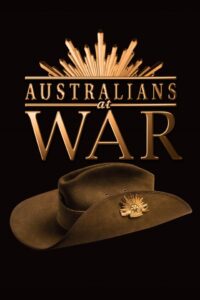
Australians at War in Netherlands East Indies – Film Archive
Selected individuals linked to the Netherlands East Indies (NEI) during World War II for which the Archives holds interviews. Click here for the interviews. The Archive is an Australian Government initiative, commissioned through the Department of Veterans’ Affairs. It is a unique, historical collection, a resource for everyone interested in

The Other Dutch – Remembering the Indo Experience
De Andere Nederlanders – The Other Dutch is a compelling bilingual exhibition and publication that tells the often-overlooked story of the Indo-European (Indische) community: the descendants of Dutch colonisers and local Indonesians in the former Dutch East Indies, now Indonesia. These “Other Dutch” developed a unique hybrid identity, blending European
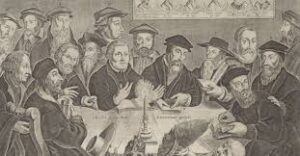
For Faith and Ideology (Dutch migration to Australia)
By Di Gabb and Roberta Julian This chapter traces two distinct yet ideologically aligned waves of Dutch migration to Australia—one preceding World War I and another following World War II. Both were driven not by typical economic motives or adventure but by deeply held ideological or religious beliefs, making these
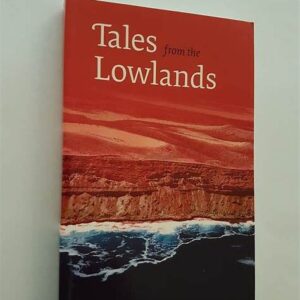
Joed Elich – Dutch sociologist and migration scholar
Dutch and Australian Government Perspectives on Migration By Joed Elich Introduction: Migration and the Double Perspective Joed Elich’s research takes a rare and crucial “double perspective” approach to Dutch-Australian post-WWII migration, examining not only the policies and motivations of each government but also the lived experiences of Dutch migrants and
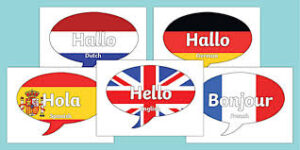
Dutch Australians in Perspective: Language, Identity, and Migration
Drawing on the Works of Desmond Cahill and Michael Clyne Introduction and Overview Post-war Dutch migration to Australia has long been perceived as an understated success story — a community that quietly integrated, worked hard, and caused few social ripples. Yet beneath this stereotype lies a more nuanced and layered
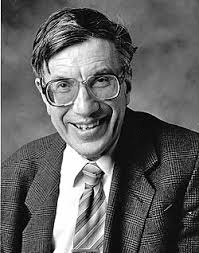
The Dutch Language in Australia – Some Comparisons with Other Community Languages
Author: Michael Clyne Introduction: In this seminal article, sociolinguist Michael Clyne investigates the unique trajectory of Dutch language use and decline in Australia, comparing it with other community languages such as Italian, Greek, German, and Vietnamese. His central question: Is the Dutch linguistic experience in Australia an anomaly, or does
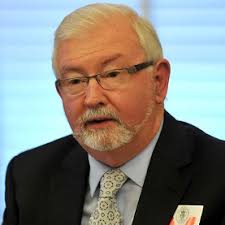
Lifting the Low Sky” – Dutch Australians: Assimilationists or Accommodationists?
Summary Desmond Cahill’s extensive analysis explores whether Dutch Australians have assimilated into mainstream Australian society or adapted through a more complex, accommodationist process. Drawing on historical, cultural, and statistical perspectives, Cahill challenges the longstanding stereotype of the Dutch as “the perfect migrants” who effortlessly assimilated and vanished into Australian life.

Refugees and Rebels: Indonesian Exiles in Wartime Australia
Jan Lingard’s Refugees and Rebels delves into the largely overlooked history of over 5,000 Indonesians—comprising military personnel, merchant sailors, civilians, and political prisoners—who found themselves in Australia during World War II. These individuals were evacuated from the Japanese-occupied Netherlands East Indies and were dispersed across various Australian cities and towns.

The Religious Contribution of Dutch Migrants to Multicultural Australia
By Gary Bouma Introduction and Summary: Dutch Religious Influences in Australia’s Multicultural LandscapeBased on Gary D. Bouma’s “The Religious Contribution of Dutch Migrants to Multicultural Australia” Dutch post-war migration to Australia is often told in terms of economic resilience, cultural adaptation, or family stories of hardship and hope. But less

Explanations of Post-War Dutch Emigration to Australia
By Wim Blauw. Introduction and Summary: Understanding Dutch Emigration to Australia After WWII Why did tens of thousands of Dutch citizens leave their homeland after World War II, and why did so many choose Australia as their destination? Wim Blauw’s comprehensive study provides the most thorough sociological explanation to date.

Cape Keer Weer: The First European Place Name in Australia – A Correction
By Peter Reynders For some time, I have argued that the proper English translation of the first European geographic name given to part of Australia is “Cape Return,” not “Cape Turn Again” or any of the other variants that have appeared in various publications. I believe this name was first

Dutch Migrants in Queensland
Author: J.A. Hempel (Jan Andrzej Hempel)Published: 1960Publisher: Department of Demography, Australian National UniversityLength: 100 pages Overview: This publication is a demographic and sociological study of Dutch post-war migrants in Queensland, Australia. It was part of a broader research program undertaken by the ANU’s Department of Demography to understand post-war migration

Dutch Voyages and Charting of the coast of Western Australia 1616-1727
YEAR NAVIGATORS VESSELS LOCATIONS KEY EVENTS KEY REFERENCES 1616 Dirk Hartog Eendracht Dirk Hartog Island 1st recorded sighting of west coast of Australia. Arrived 25 October, sailed 27 October. Left Hartog Plate. Major pp.ixxxi-xxxiv; Heeres pp.8-10 1618 Haevik Claesz. van Hillegom Zeewolf North West Cape Sighted North West Cape on
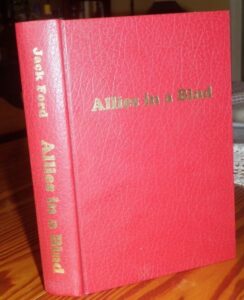
Forgotten allies: how Brisbane’s WWII history has faded from Dutch memory
Even in Brisbane, the global importance of the city’s role during World War II is largely unknown. While many locals are aware of the large American presence, few know that the Dutch also operated from here during the Pacific War. Even fewer in the Netherlands would be aware of the

‘Dutch Connections’ – ABC digitised radio programmes – 1988
Overview of the Series Title:“Dutch–Australian Connections”]Produced by: Australian Broadcasting Corporation (ABC) and Radio NederlandFormat: 8 x 10-minute radio programsYear: c. 1988 Theme: The series traces four centuries (from 1606 till 1988) of Dutch-Australian connections, covering early exploration, wartime alliances, migration stories, and shared cultural developments. The ABC can supply this
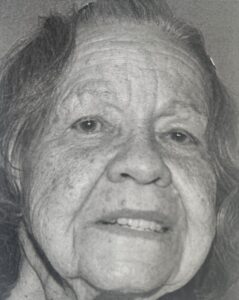
Eugenie Blackney survived the Japanese camps
I have lived in Forest Lake, Brisbane for years. But during World War 11,-I was in Java. When the Japanese invaded, the Dutch East Indies government escaped to Australia and ended up at Wacol, Brisbane. My family came later, in 1945. Dutch East Indies My grandfather was Polish, and he
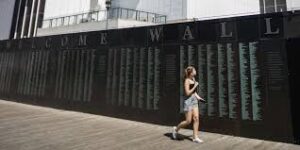
Search the Welcome Walls databases for immigrants.
Welcome Walls are monument dedicated to immigrants who have come to Australia and contributed to the nation’s development. It is a significant project aimed at acknowledging and celebrating the diverse heritage and stories of the millions of people who migrated to Australia from various parts of the world. They serve
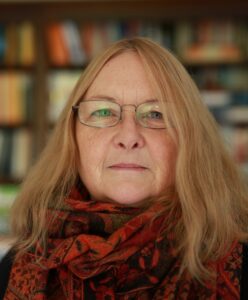
Finding Your Family in the Hostel by Dr Karen Agutter
If you’re searching for information about family members or friends who migrated to Australia and lived in hostels after World War Two, Dr. Karen Agutter has compiled a guide to help navigate state and national archives. Getting started Tracing migrant hostel records can be challenging, but Australia’s archives and libraries
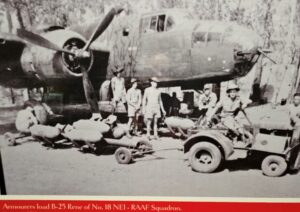
RAAF Members on Netherlands East Indies Aircraft + Archival documents
During World War II, members of the Royal Australian Air Force (RAAF) were involved in a variety of operations, including flying missions on aircraft belonging to the Netherlands East Indies (NEI) Air Force. This cooperation occurred after the fall of the Dutch East Indies (now Indonesia) to Japanese forces in

Dutch Migration to Tasmania in 1950: Motivation, Intention and Assimilation
“Dutch Migration to Tasmania in 1950: Motivation, Intention and Assimilation” is a thesis by Kees Wierenga, submitted in October 2005 for a Bachelor of Arts with Honours in History at the University of Tasmania. The study delves into the experiences of Dutch migrants who relocated to Tasmania in 1950, focusing

The Devil’s Grin – Japanese imprisonment of Dutch and Australian People
The book The Devil’s Grin by Toni Harting provides an in-depth exploration of the Japanese military’s imprisonment of Dutch civilians in the Dutch East Indies during the Pacific War (1941-1945). Harting offers a detailed account of the Japanese occupation, focusing on the brutality endured by prisoners in the concentration camps,
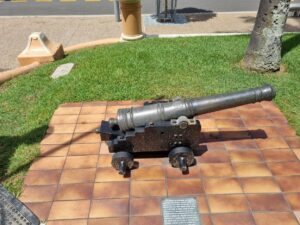
How did a VOC canon end up in Maryborough
N.E.I. ARTEFACT FOUND IN QUEENSLAND by Jack Ford Recently, Jack Ford was at Hervey Bay and he visited the nearby city of Maryborough. He visited the Town Hall building that was built in 1908 and he was surprised to find an old Dutch naval cannon mounted outside that building’s entrance.

Help uncover Dutch-Australian migration stories through the Rotterdamsche Lloyd collection
The Dutch Australian Cultural Centre (DACC) is happy to support the CBG|Centre for Family History in their initiative to make the collection of the Koninklijke Rotterdamsche Lloyd (1883–1969) accessible and searchable. This extensive collection includes 30,000 scans of passenger manifests, ship logs, and crew lists, revealing an estimated 750,000–890,000 individual
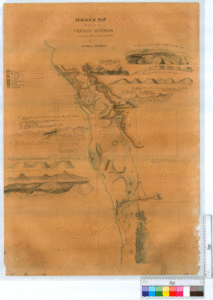
Dutch-born Ferdinand von Sommer left a trail of controversy across colonial Australia
Republished with permission. Original article was published in the Conversation on January 3, 2025 Author:Alexandra LudewigProfessor and Head of the School of Humanities, The University of Western Australia Disclosure statementAlexandra Ludewig does not work for, consult, own shares in or receive funding from any company or organisation that would benefit
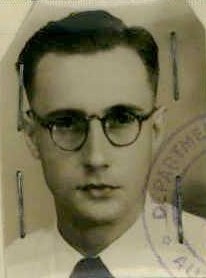
Alexander Jan Reitsma: Dutch economist and global academic influence
Read his full Wikipedia article here. Alexander Jan Reitsma (1919-1982) was a distinguished Dutch economist whose career bridged three continents, making significant contributions to the fields of international economics and trade policy. Born in Dordrecht, the Netherlands, he began his academic journey at the Netherlands University for Economics, earning advanced
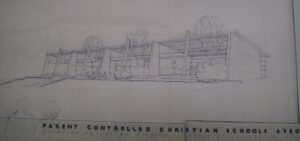
Calvin School Tasmania – became a model for Australia
Calvin School- the why and the consequences In the 1950s, education of children was the joint responsibility of the State and the local Municipality. The State provided the buildings, the teachers and the curriculum. The Municipal Councillors enforced truancy regulations , and managed requests for absences (because mum was sick

Little Groningen – Tasmania
This story is about how Little Groningen came to be. The name was coined by the farmer, Geard, who sold the land to the “G7” scouts, van der Laan and Pinkster. (The “G7” was a group of 7 families who had decided to emigrate to Tasmania and establish a building
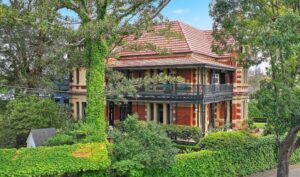
Sydney had two Dutch hospitals in the 1940s
Pierre van der Eng Sydney had two Dutch hospitals during 1944-1946. Both were related to the presence in Australia of a growing number of people from colonial Indonesia during 1942-1945. Since March 1942, officials of the government the Netherlands East Indies left Indonesia for Australia before the Japanese occupation of
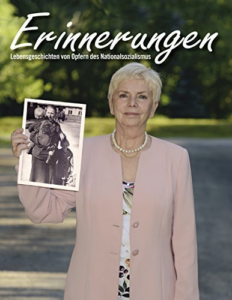
Erinnerungen family de Nijs
A family’s journey from persecution to peace In 1939, the Nazi regime upended the life of my grandfather, a tax accountant in Vienna, Austria. He owned a large apartment in the city, but being born in Czechoslovakia made him a target, despite my grandmother Caroline Kleiner’s Catholic faith and blonde
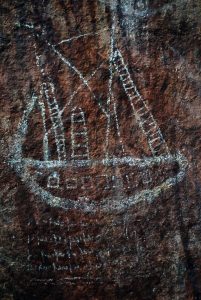
Aborigines and shipwrecks – the arrival of Australia’s first immigrants
Republished with permission. Chapter two from the book: A Touch of Dutch. For the full pdf click here. See also: First contact between the Dutch and the Aboriginal People
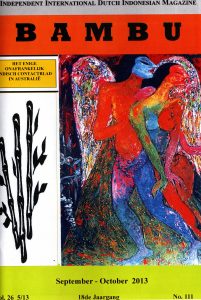
Indo (Eurasian) Communities in Australia
Dutch Indonesian Association – Cairns In April 1995 a small group of Indische mensen’ (people born in Indonesia), such as Rob Elstak, Eric & Rob Marcus, Leo Vandersar, Jan Schmieman and Andreas Flach, came together in Cairns and founded the ‘Dutch Indonesian. Association – Melati’ (Jasmine). Andreas Flach became the

Missing millions: Java’s 1944–45 famine in Indonesia’s historiography
Introduction Very few people in Indonesia, Australia and the Netherlands know that during WWII many Indonesians fought on the side of the Allies. And nobody there knows the estimate of 4 million deaths. Because both are not part of Indonesia’s official history and therefore its public memory. The article below
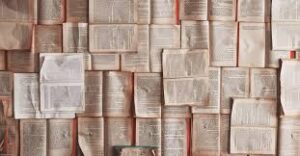
Author and contributor biographies
Republished with permission. Author and contributor biographies of the book: A Touch of Dutch. For the full pdf of the book click here. Introduction chapters of the book: Touch of Dutch
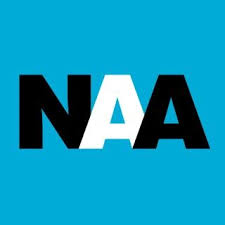
Tracing your Dutch ancestors in the National Archives of Australia
The National Archives of Australia (NAA) has a very extensive archive in relation to the Netherlands . Their archives only contain documents from government sources. The DACC collects private collections and private stories so the combination is complementary. The following article is republished with permission. Chapter 38 of the book:
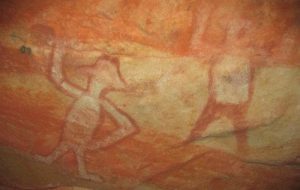
Our Mob: Shipwrecks survivors and WA Aboriginal Peoples
Republished with permission. Chapter 37 of the book: A Touch of Dutch. For the full pdf of the book click here. Introduction chapters of the book: Touch of Dutch

The photography of Richard Woldendorp
Republished with permission. Chapter 36 of the book: A Touch of Dutch. For the full pdf of the book click here. Introduction chapters of the book: Touch of Dutch See also: Dutch-Australian photographer Richard Woldendorp
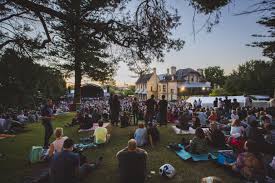
Floating: an exhibition of artworks at the Fremantle arts centre by Dutch Australians
Republished with permission. Chapter 35 of the book: A Touch of Dutch. For the full pdf of the book click here. Introduction chapters of the book: Touch of Dutch

The Dutch School ‘De Schakel’
Republished with permission. Chapter 34 of the book: A Touch of Dutch. For the full pdf of the book click here. Introduction chapters of the book: Touch of Dutch
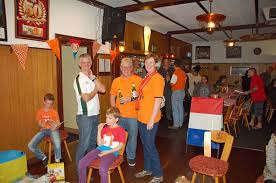
The history of Dutch clubs in Perth – WA 1950s-2016
Republished with permission. Chapter 33 of the book: A Touch of Dutch. For the full pdf of the book click here. Introduction chapters of the book: Touch of Dutch
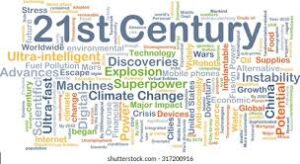
21st Century Dutch Interests
Republished with permission. Section Five of the book: A Touch of Dutch. For the full pdf of the book click here. Introduction chapters of the book: Touch of Dutch
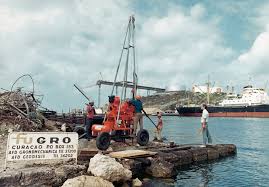
The Dutch in Business: the high-end of town
Republished with permission. Chapter 31 of the book: A Touch of Dutch. For the full pdf of the book click here. Introduction chapters of the book: Touch of Dutch
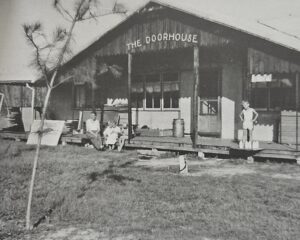
The Doorhouse – Wieman Family
Republished with permission. Chapter 30 of the book: A Touch of Dutch. For the full pdf of the book click here. Introduction chapters of the book: Touch of Dutch

The Plug Family Business
Republished with permission. Chapter 29 of the book: A Touch of Dutch. For the full pdf of the book click here. Introduction chapters of the book: Touch of Dutch
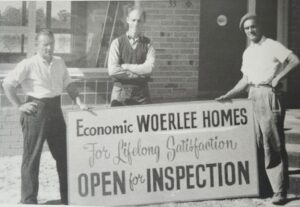
The migration experience of the Woerlee Family
Republished with permission. Chapter 28 of the book: A Touch of Dutch. For the full pdf of the book click here. Introduction chapters of the book: Touch of Dutch
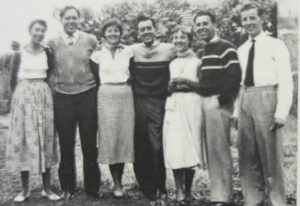
Emigration: My story – Peter Rietveld
Republished with permission. Chapter 27 of the book: A Touch of Dutch. For the full pdf of the book click here. Introduction chapters of the book: Touch of Dutch

Book: Touch of Dutch – Mercantile
Republished with permission. Section Four of the book: A Touch of Dutch. For the full pdf of the book click here. Introduction chapters of the book: Touch of Dutch
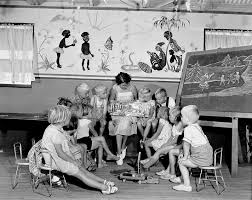
Between two world : second generation Dutch migrants in Western Australia
Republished with permission. Chapter 25 of the book: A Touch of Dutch. For the full pdf of the book click here. Introduction chapters of the book: Touch of Dutch
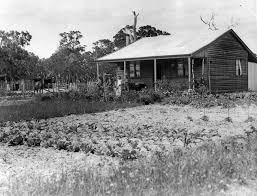
Making a Dutch home in Western Australia from the 1950s
Republished with permission. Chapter 23 of the book: A Touch of Dutch. For the full pdf of the book click here. Introduction chapters of the book: Touch of Dutch
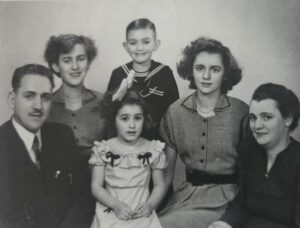
Ticket to a new life
Republished with permission. Chapter 22 of the book: A Touch of Dutch. For the full pdf of the book click here. Families Crijns, Coenen, Verveer Introduction chapters of the book: Touch of Dutch
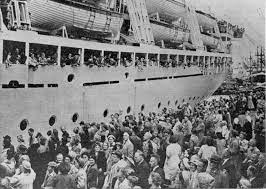
Roller Coaster Migrants
Republished with permission. Chapter 21 of the book: A Touch of Dutch. For the full pdf of the book click here. Families Rietveld, Rijnders Introduction chapters of the book: Touch of Dutch
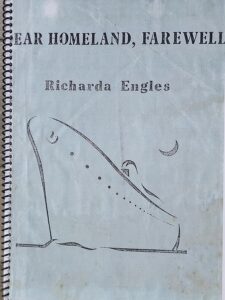
Dear Homeland, Farewell by Richarda Engles
In this booklet, written in the 1980s, Richarda (‘Richa’) Engles (born 1924 in Rotterdam) shares her life story with her readers. With candour and memory for detail she recounts her youth in The Netherlands and her marriage to widower Jacob (‘Jaap’) van der Meer (1916-1970) who brought his five children
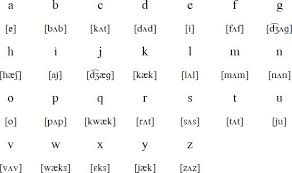
Double Dutch – the Dutch language in Western Australia
Republished with permission. Chapter 20 of the book: A Touch of Dutch. For the full pdf of the book click here. Introduction chapters of the book: Touch of Dutch
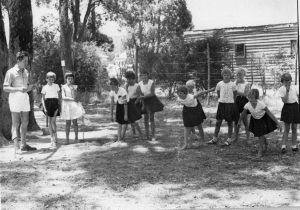
The Free Reformed Community in Western Australia
Republished with permission. Chapter 19 of the book: A Touch of Dutch. For the full pdf of the book click here. Introduction chapters of the book: Touch of Dutch
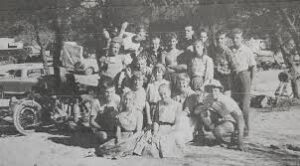
Boomerang Church Youth Club Perth
Republished with permission. Chapter 18 of the book: A Touch of Dutch. For the full pdf of the book click here. Introduction chapters of the book: Touch of Dutch

The Hervormde Kerk in Perth
Republished with permission. Chapter 17 of the book: A Touch of Dutch. For the full pdf of the book click here. Introduction chapters of the book: Touch of Dutch
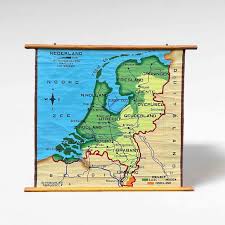
Migration- Leaving from the Netherlands
Republished with permission. Chapter 16 of the book: A Touch of Dutch. For the full pdf of the book click here. Introduction chapters of the book: Touch of Dutch
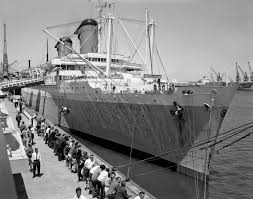
Fremantle: First step to a new future – migration
Republished with permission. Chapter 15 of the book: A Touch of Dutch. For the full pdf of the book click here. Introduction chapters of the book: Touch of Dutch See also: Bonegilla the largest migrant camp – 18.000 Dutch people passed through
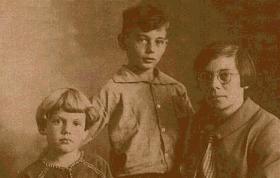
Dutch socialist pioneer links with Dutch literary giants
Republished with permission. Chapter 14 of the book: A Touch of Dutch. For the full pdf of the book click here. Introduction chapters of the book: Touch of Dutch See also: Dutch authors van het Reve and their link with Australia.
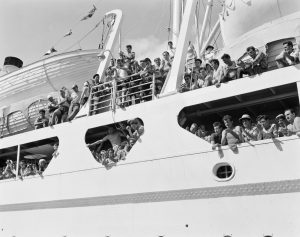
Book: Touch of Dutch: Migration
Republished with permission. Section 3 of the book: A Touch of Dutch. For the full pdf of the book click here. Introduction chapters of the book: Touch of Dutch
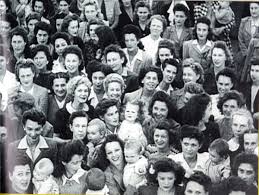
Through the looking glass: an Australian War Bride writes home
Republished with permission. Chapter 11 of the book: A Touch of Dutch. For the full pdf of the book click here. Introduction chapters of the book: Touch of Dutch
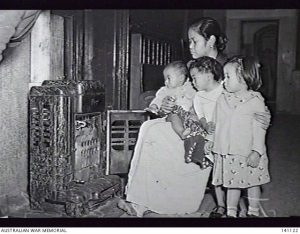
‘These were wild times’: the evacuation of Dutch nationals from the former Netherlands East Indies to Western Australia, 1945-46
Republished with permission. Chapter 10 of the book: A Touch of Dutch. For the full pdf of the book click here. Introduction chapters of the book: Touch of Dutch See also: Evacuees and Refugees from Netherlands East Indies recuperating in Australia after WWII
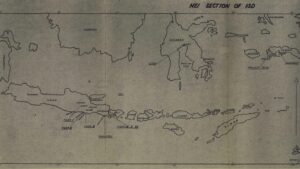
Netherlands East Indies Dutch: experiences of war, occupation, revolution and evacuation, and rehabilitation in Australia 1942-1946
Republished with permission. Chapter 9 of the book: A Touch of Dutch. For the full pdf of the book click here. Introduction chapters of the book: Touch of Dutch
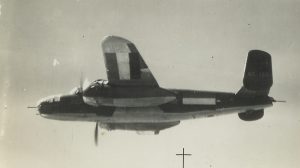
Operation Potschot: Dutch airmen in the defence of Western Australia, 1944
Republished with permission. Chapter 8 of the book: A Touch of Dutch. For the full pdf of the book click here. Introduction chapters of the book: Touch of Dutch See also: No 18 and 120 Squadrons involved in the Western Australian Emergency – March 1944
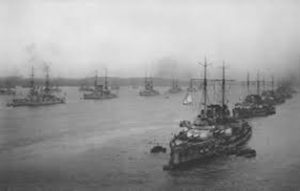
The Dutch Turn Up Down Under – WWII
Republished with permission. Chapter 6 of the book: A Touch of Dutch. For the full pdf of the book click here. Introduction chapters of the book: Touch of Dutch
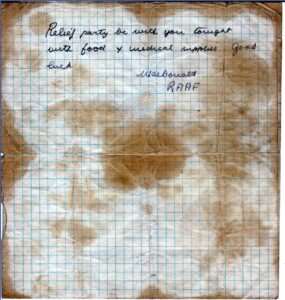
The Diamond Mystery -1942
Republished with permission. Chapter 5 of the book: A Touch of Dutch. For the full pdf of the book click here. Introduction chapters of the book: Touch of Dutch See also: The Lost Dutch Diamonds on Carnot Beach, Western Australia
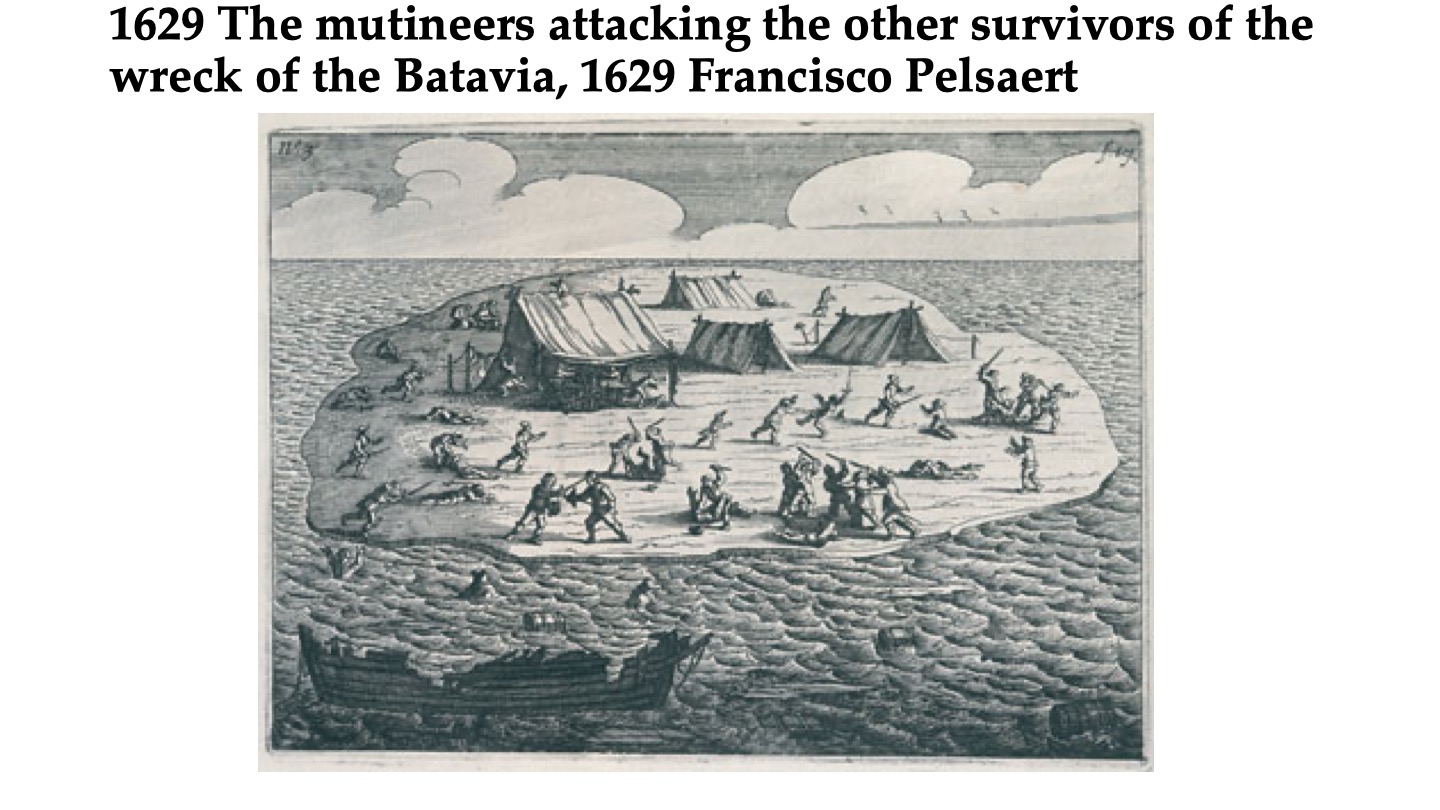
Anthropological analyses of human skeletal remains associated with the Batavia Mutiny
Republished with permission. Chapter 3 of the book: A Touch of Dutch. For the full pdf of the book click here. Introduction chapters of the book: Touch of Dutch See also: Dirk Drok and the discovery of the Batavia The Batavia and its many stories. Batavia research at Flinders University Archaeology

Aboriginals and Shipwrecks – The arrival of Australia’s first immigrants
Republished with permission. Chapter 2 of the book: A Touch of Dutch. For the full pdf of the book click here. Introduction chapters of the book: Touch of Dutch

Book: Touch of Dutch – Introduction & Contents
Republished with permission. Introduction chapters of the book: A Touch of Dutch. For the full pdf of the book click here. Full index of the book with links to each chapter see below. Section One: Dutch Maritime history in Australia Chapter 2 Aboriginals and Shipwrecks – The arrival of Australia’s first
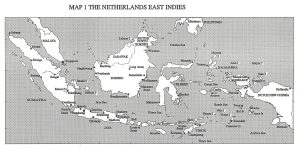
Inventaris Digitale collectie Project ‘Afscheid van Indië’
Inventory Digital Collection Project ‘Farewell to the Indies’
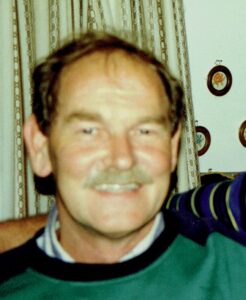
The Rook family: A Tasmanian migration story
By Meinard Karel Rook – Compiled in 2005 ArrivalWe arrived in Australia in August 1950, after a 6 week voyage from Holland on the Sibijaek. Our first land fall was in Fremantle, then on to Melbourne, where we transferred to the Taroona for the voyage across Bass Strait to Beauty
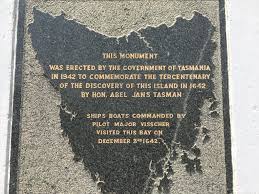
Abel Tasman Stories
Special Tasman’s Briefcase to mark the 300th anniversary of the death of Abel Tasman The briefcase was made from black leather, embossed with the Tasmanian coat of arms. Inside there were several compartments. The main compartment contained a carved {profile?] head of Tasman let into a block of Tasmanian myrtle.A
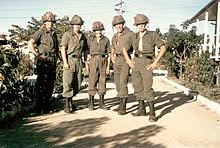
Charlie Rook’s diary of his National Service 1968/69
The journal below is based on the diary Charlie kept through his National Service days. It was later edited by him, and passed to this editor for inclusion in the record of achievements of Dutch migrants to Tasmania. It may be seen as the description of the life of an
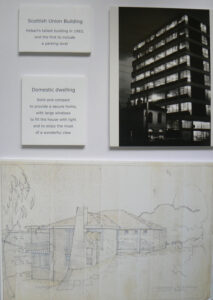
Tasmanian Architect Dirk Bolt
In October 1951 Dirk Bolt migrated from his native Groningen, the Netherlands, to Kingston, Tasmania, Australia, where he married Guusje (Kusha) van der Laan in January 1953. In 1964 they moved to Canberra. From 1971 onward, they moved to various places in response to a series of international appointments
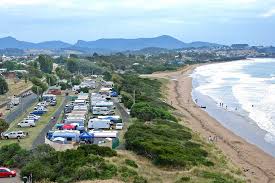
Dutch settlers in Ulverstone, Tasmania
Fair Dinkum Dutch Courage Compiled by Elizabeth Nickols (27 families) Excerpts (and some additional notation by Kees Wierenga)Brandsema, Wilko (Bill) and Hendrikje (Hennie) nee Wind(pp.1 – 9, 20 photos) Wilko was born in 1910 in Stadskanaal, the son of a baker. Hennie was born a year later, her father a
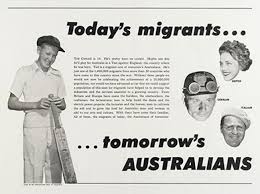
Dutch Identity and Assimilation in Australia: an interpretative approach (thesis)
A thesis submitted for the degree of Doctor of Philosophy of the Australian National University by Wendy Walker-Birckhead – July, 1988 Abstract This ethnographic study examines Dutch identity and assimilation in Australia. Historically, Dutch migrants have been regarded as a highly assimilated group who, upon arrival in Australia, willingly abandoned
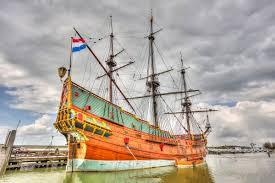
Reports on Australia Dutch Heritage Days – 2012
In 2012, Australia Dutch Heritage Conferences were held in Canberra, Fremantle and The Hague with the support of the Netherlands Ambassador to Australia Willem Andreas . See also: Conference Papers and Keynote addresses by researchers Migrant (R)e-collections- Proposal for a workshop (historic) Project Migrant Australian and Dutch emigrants Dutch Australia At

B-25 bombers ordered by the Dutch ended up with USAAF
Urgent need to replace aging planes – 162 new planes ordered The Netherlands nor NEI and nor Australia for that matter were well prepared for war. In NEI the ML-KNIL were using the no longer up-to-date Martin bombers (from the Glenn L. Martin Company in the USA). They were the
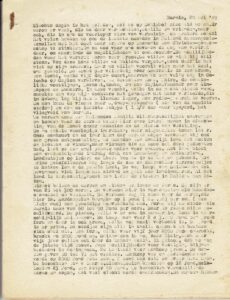
Letters from emigrant Jan de Vries – Tasmania 1949
Introduction The following are 29 letters, written by one of the first Dutch migrants to Tasmania, who settled in Penguin in 1949. He composed these letters as reports for his cohort still in the Netherlands, encouraging them to prepare for their eventual migration and urging them to act quickly. It
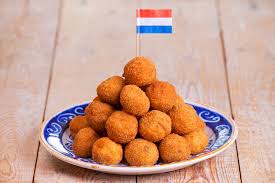
What’s for dinner for Dutch emigrants
The chapter Bitterballen, snacks, nostalgie en Holland-promotie (Bitterballen, snacks, nostalgia, and Holland promotion) in the publication ‘Wat schaft de pot‘ (What’s for dinner) discusses the role of traditional Dutch food, particularly bitterballen and other snacks, in maintaining nostalgia and cultural identity for Dutch emigrants, including those in Australia. Bitterballen, a
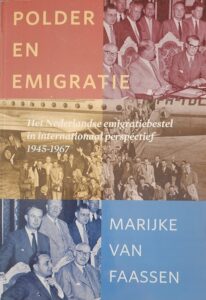
Polder and Emigration: Dutch emigration governance in an international perspective 1945-1967
Marijke van Faassen In “Polder and Emigration,” the Dutch emigration policy is analyzed as an integral part of the Netherlands’ social and economic policy between 1945 and 1967. The book delves into how various key players from government and civil society collaborated post-1945 to shape this policy, situating it within
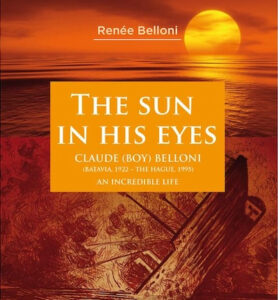
Claude Belloni-Dutch-Indonesian in Australia
The Sun in His Eyes, is book written by Renée Belloni. It explores the life of Claude Belloni, a Dutch-Indonesian man whose experiences capture the complex identity struggles of mixed-race Indonesians during and after Dutch colonial rule. Claude’s life, marked by extraordinary events—from surviving a shipwreck and witnessing the atomic
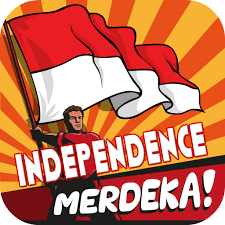
Indonesian Independence: Australia’s Involvement.
This paper by Dr.Nonja Peters presents a comprehensive exploration of Australia’s involvement in Indonesian independence and the complex historical narrative surrounding the Dutch East Indies during and after World War II. It addresses the “History Wars” between Dutch and Indonesian perspectives on Indonesian independence, focusing on critical issues such as
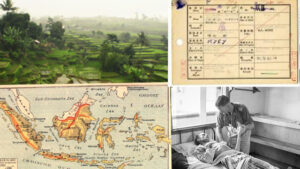
Dutch evacuations from Indonesia to Australia
This paper written by Dr. Nonja Peters, explores the social and political context of two evacuations out of the Netherlands East Indies (NEI) into Australia, the first from just before the Kalidjati capitulation on 8 March 1942 the second in the aftermath of war from 1945 to 1948. Who were
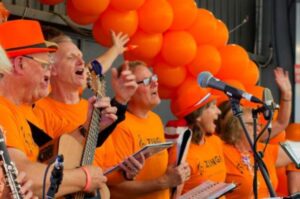
Community music, identity and belonging among Dutchies in Australia.
This article discusses the experiences of Dutch identity and belonging to a music-making group in the Dutch migrant community in Melbourne, Australia. The article shows how making music together can bridge generational, gender and class differences. Multiculturalism empowered the participants to explore their dual identity as Dutch Australians, intersecting with
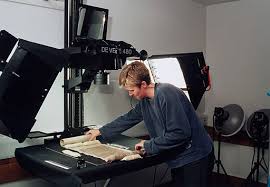
Digital Preservation of Cultural Heritage
The paper “Digital Preservation of Cultural Heritage” examines the current state of digitalisation in Australian archives and libraries, comparing it with global trends. It highlights how technological advancements and globalisation allow us to rethink how we preserve cultural heritage, especially in relation to migration. Migrant histories, scattered across borders, require
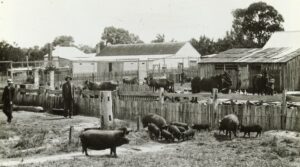
Pioneering Dutch settlers in the 1920s-In search of utopia
By Diane Gabb Introduction Much has been written about the large numbers of Dutch migrants who sought a new home in Australia after the devastation of World War II when over 200 000 citizens had lost their lives and the failed Netherlands economy had little to offer but emigration propaganda. Australia
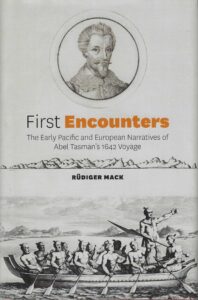
‘First Encounters: The Early Pacific and European Narratives of Abel Tasman’s 1642 Voyage’ by Rüdiger Mack
New Zealand-based author Rüdiger Mack is releasing a new book about Dutch navigator Abel Tasman (1603-1659). Titled First Encounters: The Early Pacific and European Narratives of Abel Tasman’s 1642 Voyage, Mack’s 348-page book takes a new look at the beginnings of contacts between the Dutch and Indigenous peoples in Australia,
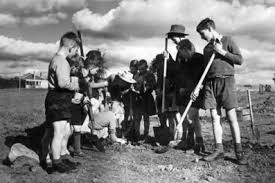
From Tyranny to Freedom:Dutch children from the Netherlands East Indies to Fairbridge Farm School WA, 1945-1946
This book is reproduced here with permission. Pictures of Fairbridge Farm School
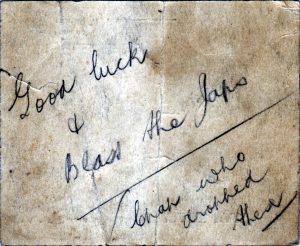
The diamond mystery (WWII)
Republished with permission. Chapter five from the book: A Touch of Dutch. For the full pdf click here. See also: Dutch-Russian Ace Pilot Iwan Smirnoff (WWII) The Lost Dutch Diamonds on Carnot Beach, Western Australia

Dutch Maritime history in Australia from the Book ‘A Touch of Dutch’
Republished with permission. Section one from the book: A Touch of Dutch. For the full pdf of the book click here. Introduction chapters of the book: Touch of Dutch See also: Following the Dutch VOC Seafarers

Timeline of recorded ship landings 1606-1814
This is a timeline of the build-up to and recorded events of Australia’s earliest maritime history. It Includes the ‘Australia On The Map (AOTM) Landings List 1606 – 1814’ from Willem Janszoon* to Louis de Freycinet and Matthew Flinders. It is a database of concise information about landings on and
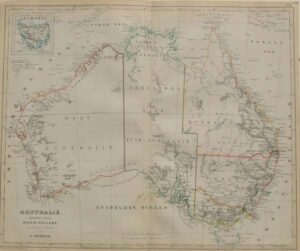
The Dutch Toponymic Legacy in Australia
A country’s toponyms has many hidden complexities. For example, some name-forms can deceive theunwary in terms of their origins and meanings. Australia’s toponymy is a good case in point.Many of Australia’s toponyms are transparent as to their etymologies, such as, Port Macquarie (NSW),Sandy Bay (TAS), whilst others are more opaque,
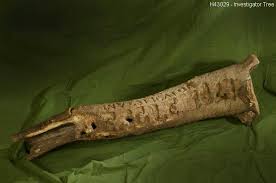
Dutch links with Sweers Island – Gulf of Carpentaria
Sweers Island is an island in the South Wellesley Islands in the Gulf of Carpentaria, Queensland. The island was given its European name by explorer Matthew Flinders on 16 November 1802 after Salomon Sweers, a council member of the East India Company at Batavia who was one of those who

Thank you DACC website users – website statistics
We are excited to share with you our latest website statistics, which serve as a resounding vote of confidence in the digital strategy we embarked upon four years ago. This snapshot, taken on July 7th, offers a comprehensive overview of our website’s performance over the past 28 days. Your continued

Associate Professor Klaas Woldring – Historic Maps and Political Publications. New Book: A Vision for Australia – October 2025
This article is about Associate Professor Klaas Woldring, a retired academic and longtime member and board member of the DACC. The article contains a short biography of Klaas, and outlines some of his academic work and his interests in retirement. Biography Klaas Woldring was born on 2nd July 1934 in
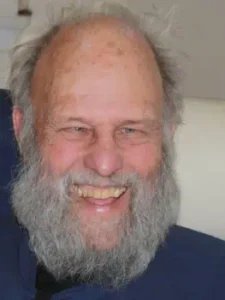
The colourful life of Jan de Voogd
Johannes Jan Nicolaas de Voogd, known as Jan, was born in January 1932 in Japan to Dutch parents, Nicolaas Arie Johannes (Niek) de Voogd (1899-1977) and Amarintia Clasina de Vries (1903-1998). Jan’s parents married in 1930 in Kattendijke in Zeeland, the Netherlands. At the time his father Niek was an
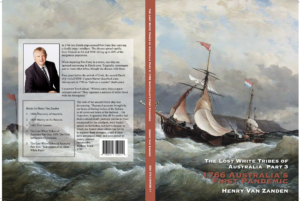
1766 Australia’s First Pandemic
After publishing ‘The Lost White Tribes of Australia‘ Part Two, the author Henry van Zanden realised that the Victorian chapters deserved a more thorough investigation and its own book dedicated entirely to the smallpox outbreak in Victoria and NSW. In Victoria, he explored the South-western districts especially Lake Condah and
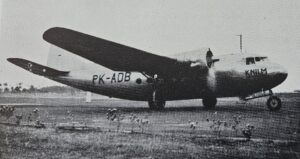
Three WWII emergency landings of Dutch planes in the NT in one day
On February 28, 1942, Japanese troops rapidly advanced through northern Java, quickly occupying airfields and towns. Within hours, they were only 50km from Andir Airport (Bandung) in West Java, where five civilian Royal Netherlands Indies Airways (KNILM) planes were based. Only the next day did the Dutch Government in Exile
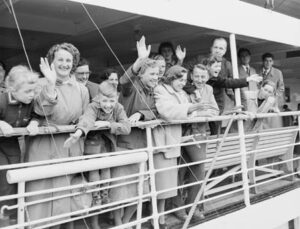
Dutch Women in Australia
In this paper Dr. Nonja Peters explores the manner in which Dutch women, who left the Netherlands at various times during the postwar period, negotiated and carved out an ‘identity’ and satisfied their need for a sense of belonging in Australia. The interpretation derives its conclusions from oral history interview
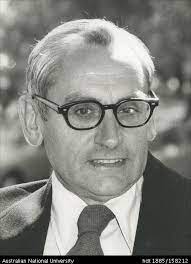
Pastor Hans Mol’s Life, Career, and Contributions
Biography Johannis Jacob “Hans” Mol, (14 February 1922 – 26 November 2017) a notable sociologist of religion, was born in Rozenburg. His early academic pursuits at the University of Amsterdam were disrupted by World War II when he refused to pledge allegiance to the Nazi party. Consequently, he was forced
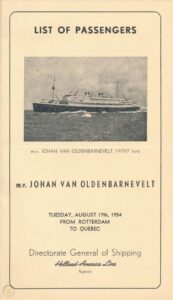
Where to find Shipping Lists – Passenger arrival records?
The National Australian Archives (NAA) holds a large number of passenger arrival records. These records indicate how people moved into and out of Australia. You can search these arrival records in the NAA collection. This includes detailed passenger records for arrivals and departures at all Australian ports from 1924. This
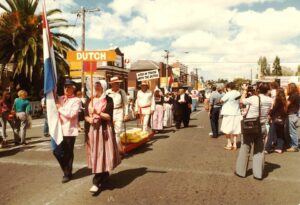
The Dutch in Geelong
Dutch Clubs In 2024, the Dutch population in Geelong comprises of 1400 people. In the early 1950’s they established the Geelong Dutch Club, which has since grown to 10 active Dutch clubs servicing the Geelong Region, they are: • Swallows Karnival Club• The Rocket Club• Micare/ Dutchcare• 50 plus Club•
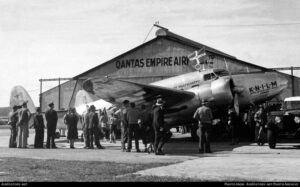
WWII Dutch Lockheed crash landed near Katherine
The following is a translation of a story recorded in the book: “De KNILM vloog door..“ (The Royal Netherlands Indies Airways continued to fly) On Thursday, March 26, 1942, a Lockheed Super Electra SE-14 PK-AFM operated by KNILM (Royal Netherlands Indies Airways) failed to arrive at its destination of Batchelor
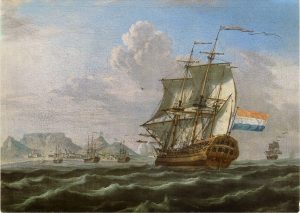
First Dutch contacts in Australia – North west coast of Australia 1643 to 1688
[North West Cape to Cape Londonderry] Tasman’s Voyage of 1643 Documentary Source other than original Journal Witsen, N 1705Noord en Ooste Tartarye,Amsterdam: Francois Halma, pp.175-6. p.175In latitude 190 35’ and longitude 1340 natives who appeared in great numbers threw stones at the people the Dutch sent ashore in 1643; these
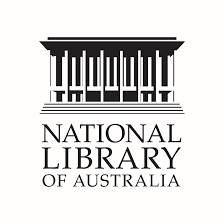
Interviews and information of Dutch WWII veterans and related information
Dutch war veterans in Australia oral history project [sound recording] The aim of this project “is to collect interviews that will recapture the life experiences of a representative group of Dutch veterans in Australia. Most of these veterans served with the Royal Netherlands Army in the Netherlands East-Indies (NEI) during
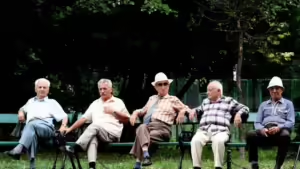
Projected Dutch Aged Stats NSW 1981- 2001
The following text is from a booklet published by the Federation of Netherlands Societies Ltd. in February 1985. The research for this booklet was done by Mijntje Hage. The Dutch NSW Nursing Committee is actively carrying out a feasibility study regarding the establishment of a nursing home or, alternatively, the provision of

DACC – Primary Research Projects
The following breakdown provides a comprehensive overview of completed and ongoing research projects in the field of DACC. Allies in a Bind: Australia and the Netherlands East Indies in the Second World War Australia Explained: A Site for Newcomers and Old Hands Children Born on Ships En Route to Australia

First Dutch contacts in Australia – North coast of Australia 1636 to 1705
[Cape Londonderry to Norman River] Gulf of Carpentaria and Arnhem Land The coast of Arnhem Land was mapped by the Dutch in the “Arnhem” skippered at that stage by Willem van Coolsteerdt in 1623 but there are no accounts of what transpired during that section of their voyage. Voyage of
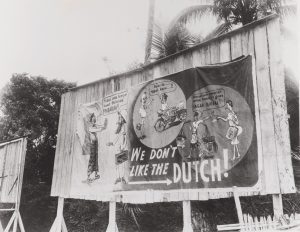
The end of WWII. Liberation of Borneo by Australian troops.
The 15th day of August 1945 will go down in history as the day of the end of the Second World War. On that day, Japan capitulated and the President of the United States announced that the conflict in the Pacific was over. But there was no question of a

Dutch spy woman involved in the decision to start the NSW penal settlement in 1788?
Margaretha Wolters, also known as Marguerite Wolters, was an intriguing figure in 18th-century espionage. Her clandestine activities appear to have played a pivotal role in shaping British decisions during that era. Amazingly she appeared to have run a European espionage network, first with her husband but after his death on her

Conference Papers and Keynote addresses by researchers
The following overview has been compiled by Dr. Nonja Peters Papers on Dutch culture and heritage by Nonja Peters 2016: Opening and closing/summing up speeches at the NIAS LORENZ International Workshop on Digital Humanities – Conceptualising a model for the Digital Preservation of Immigrants Cultural heritage, 22 and 26 August

John Berends: A Life of Innovation and Service in Australia’s Agricultural Landscape
John (Jan) Berends was born in 1937, in a village near Zwolle, where he attended high School (HBS – B). After successfully completing his secondary schooling, he was conscripted into National Service, although not quite voluntary, serving for 21 months. He obtained the rank of sergeant and was discharged in
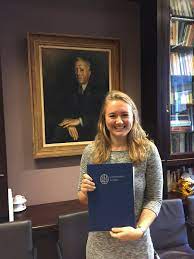
We were the ones that integrated’:Dutch post-war migrant children in Australia
A research on the change in transnational ties of Dutch post-war migrant children in Australia On November 1, 2018 Anne Brehler defended her Master thesis ‘We were the ones that integrated’: Dutch post-war migrant children in Australia. She got cum laude Congratulations. This research focuses on children of post-war Dutch
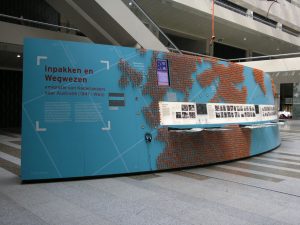
The preservation and digitalisation of Dutch- Australian Migrant Registration Cards
The preservation and digitalisation of Dutch- Australian Migrant Registration Cards Over the decades, the Netherlands Embassy and Consulates in Australia maintained a card system documenting migrants from the Netherlands. The system contains over 55,000 cards, representing 80-90% of Dutch people who emigrated to Australia between 1946-1991. In 1998, The Consul-General
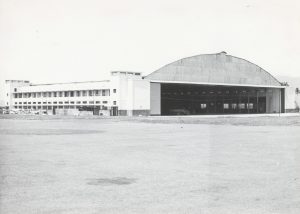
‘Albury rescue’ repeated during WWII in the Netherlands East Indies
The Dutch and their WWII Allies were totally unprepared for the rapid advances of the Japanese army. Nobody had expected that Singapore would fall within 10 days, and in no time, they invaded the Netherlands East Indies (NEI). Despite the rapid progress, the Dutch Government-in-Exile in London did not allow
The DACC Research Team
We proudly present our DACC Research Team. The team is involved in: The DACC Research Team includes.:
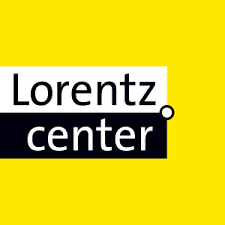
Migrant (R)e-collections- Proposal for a workshop (historic)
All over the world migrants have left multiple traces, deep traces that are indispensable forthe fostering of heritage communities and for research in the humanities and social sciences.Yet the growing societal demand for cultural services and the increasingly insufficientresources available to manage migrants’ cultural heritage is creating a gap —
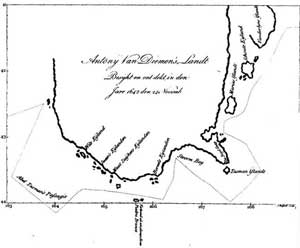
Abel Tasman Landing Site – Tasmania 1642
The Tasman expedition left Batavia (Netherlands East Indies, now Jakarta, Indonesia) on 14th August 1642 with two vessels, the Heemskerk with a 60-man crew and the Zeehaan with 50 men on board. They first called at Mauritius, where they stayed for a month-long repair to both ships. Intending to sail
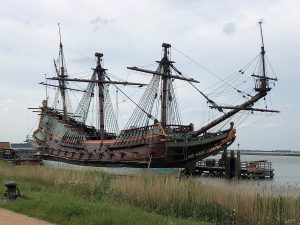
First Dutch contacts in Australia – Tasmania 1642 to 1772
Blackman Bay and East Coast of Tasmania 1642 Tasman’s Voyage of 1642 Journal – Abel Tasman Tasman, A J 1898Abel Janszoon Tasman’s Journal, J E Heeres (comp. and trans.),Amsterdam: Frederick Muller. p.15 [Report of Pilot-Major and Second Mate, 2 December 1642]They [shore party] had heard certain human sounds, and also sounds nearly

Heineken beer has been on tap in Australia since 1884
Pierre van der Eng It may appear that Dutch multinational beer brewer Heineken has long tried to carry the proverbial coal to Newcastle, because its beer has been on sale in Australia since 1884. In October that year, an advertisement of trading company Boult Bros in Adelaide announced the sale
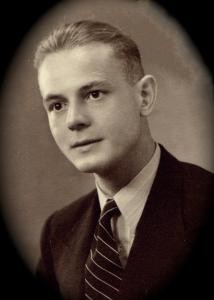
Dirk Drok and the discovery of the Batavia
Dirk Drok (Dalfsen, Netherlands 1915–1988), Perth) and his wife Kitty Isabella Theodora Uitenhage de Mist-Barkey (Java 1921–2001 Perth) lived in Java, Netherlands East Indies NEI (now Indonesia). After the Japanese had occupied the NEI, Dirk and kitty both – separately – ended up in Japanese Camps. There is an extensive
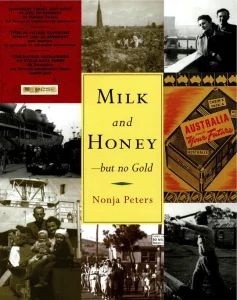
Milk and Honey – but no Gold
By Dr. Nonja Peters Milk and Honey – but no Gold is the story of those who left behind their country of birth, and everyone and everything they knew, to become part of Australia’s mass migration scheme in the years following World War II. Some were homeless and displaced refugees from

Philips factory in Newcastle produced almost all Australia’s electric lamps for 70 years
Pierre van der Eng Dutch firm NV Philips Gloeilampenfabrieken exported its incandescent lamps to agents in Australia since 1912. Its lamp sales increased quickly during World War I, when Australian imports form the UK dwindled. In 1926 Philips established its own subsidiary company in Sydney: Philips Lamps (Australasia) Ltd. It
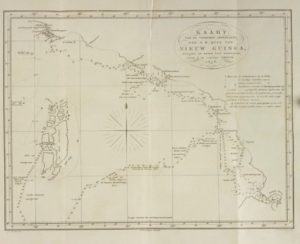
Early nineteenth century English/Dutch rivalry in Eastern Indonesia and Australia
This article is about the Dutch seizure of part of New Guinea in 1828. The English activities in Northern Australia played an important role in this. The author of the article is Jeroen Overweel. He is engaged in cultural heritage participation and is an independent researcher on Indonesian, Melanesian and
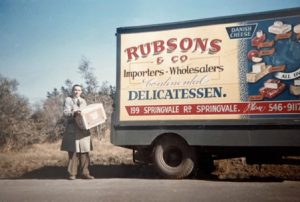
Rubens Family and Rubsons – Dutch Food Wholesalers in Melbourne
Ruben (Ruud) Rubens Ruben (Ruud) Rubens was born in Amsterdam on 3 September 1917 and died in Melbourne on 7 November 1993. After completing his high school education (MULO), he became a bicycle dealer and sales representative. He was an active sportsman—an accomplished sailor, swimmer, and soccer player—and even played
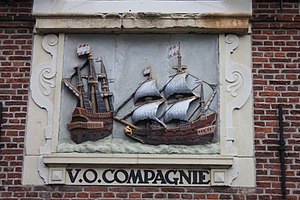
First Dutch contacts in Australia – Cape York and Torres Strait 1606 to 1643
RELATING TO: The Voyage of the Duyfken – Willem Janszoon (Master) and Jan Lodewijkszoon van Rosingeyn (Supercargo) , West Cape York Peninsula, Queensland, 1606. Documentary Sources other than original Journals Recording Navigator: J Carstenszoon 1623, taken from:“Summary abstract of the Journal of the … voyage of discovery … with the yachts Pera and
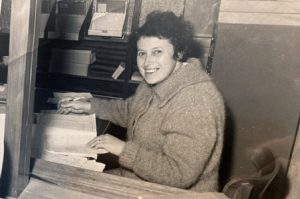
Milly Rubens Schelvis, surviving WWII concentration camps in Europe
Milly Schelvis was born in Amsterdam 11th September 1919. She had a normal, loving childhood although that is set in the background of Holland in the 1920’s and 30’s. They lived in the poor parts of the Jewish sector of Amsterdam and that meant poor housing, hunger and dreadful filth
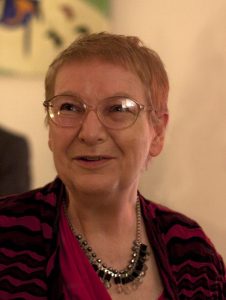
Marianne Pietersen interviews herself and others in Brisbane
I’ve been doing interviews of Dutch migrants for the Dutch Courier newspaper since a couple of years, and prior to that I wrote many articles about events in my retirement village, or at the Dutch Club in Qld, or Dutch activities in the ACT. But now I’ve been asked to

Links to declassified WWII Australian Documents re the Netherlands East Indies
Researched by Ruby Todorovski, researcher at the University of Queensland. Source: National Archives of Australia. Netherlands East Indies Commission for Australia and New Zealand Netherlands East Indies Government-in-Exile in Australia (1944-1946) Netherlands Forces in Australia WWII Evacuees from Netherlands East Indies recuperating in Australia after WWII Migration and Repatriation issues
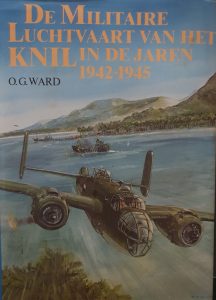
Netherlands Forces in Australia WWII
Declassified documents from the National Archives of Australia, researched by Ruby Todorovski, University of Queensland Links to other declassified WWII Australian Documents re the Netherlands East Indies Military Command After the surrender of the Dutch military in the Netherlands East Indies to the Japanese in March 1942, the Dutch military
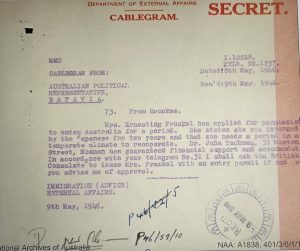
Migration and Repatriation issues after the liberation of NEI
This file, researched by Ruby Todorovski researcher at the University of Queensland includes documents regarding people who wanted to migrate to Australia after the war and issues regarding the repatriation of service people. See also: Evacuees from Netherlands East Indies recuperating in Australia after WWII Links to declassified WWII Australian
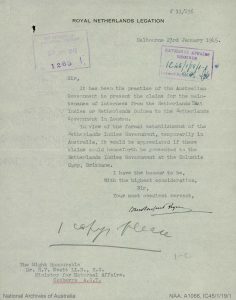
Various WWII Diplomatic Australian documents
All files below were researched by Ruby Todorovski, researcher University of Queensland Netherlands East Indies, Transfer of Government Officials to Australia – 1942 7th March 1942, Dr van Mook, van Oyen and van Plas arrived in Perth Major-General Van Oyen in charge of postwar reconstructions in NEI 26/10/43 Red Cross
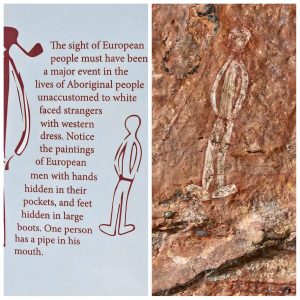
South coast of Australia to 1772 and beyond
Although part of the south coast, from Cape Leeuwin to around Fowlers Bay, was first mapped in 1627, there are no documented accounts of any visits until Vancouver entered King Georges Sound on 29 September 1791, staying until 11 October 1791. While extensive investigation were undertaken in the area, and
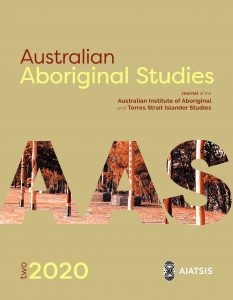
Discussion on Dutch influence on the Nhanda language.
Nhanda is an Aboriginal language of Western Australia, once spoken along the coastal strip from possibly as far south as Hill River north through to Champion Bay and the mouth of the Murchison, up to country just south of Shark Bay. There has been very little work on Nhanda until

The role of Australia in Indonesia’s independence. Declassified secret docs from the Australian Government.
The declassified original secret and top secret documents are in the pdf file at the end of this article. Change of support Australia promptly and unconditionally welcomed the Dutch after the fall of the Netherlands East Indies (NEI) in 1942. They wholeheartedly supported the establishment of the NEI-in-exile on their
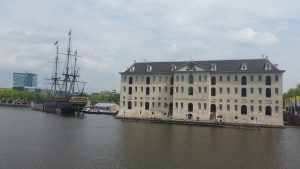
First Dutch contacts in Australia – Lower west coast – cape Leeuwin to Swan river 1658 – 1697
Elburgh 1658 Documentary Source other than original Journals “Letter of the Governor-General and Council to the Managers of the VOC December 14, 1658” in J E Heeres 1899The Part Borne by the Dutch in the Discovery of Australia,London: Luzac and Co., p.81. p.81the skipper, together with one of the steersmen,
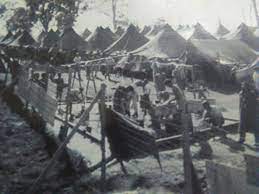
WWII Camp Victory Casino
After the Japanese invasion of Indonesia in 1942, the Dutch fled to Australia taking with them Indonesian soldiers, sailors, government officials and more. The Dutch Government made a deal with the Australian Government which gave the Dutch extra-terrestrial rights over many Indonesian refugees, declaring several former army camps as Dutch
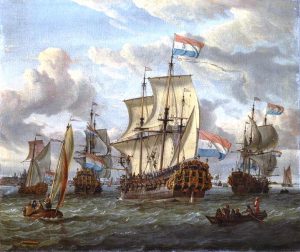
VOC vessel names: what naming patterns reveal about the name-givers’ mindsets
By: Jan Tent Studies of proper names have revealed naming patterns which may provide insights into the attitudes and values of the contemporaneous name bestowers. This essay analyses the names conferred upon thevessels of the United East India Company or Vereenigde Oostindische Compagnie (VOC), in order to ascertain whether there

Merdeka Down Under? Indonesian Civilians and Military Personnel in Australia(1942–1949)
This thesis from Dr. Judith Mirjam Rozeboom examines the lives and treatment of the Netherlands East Indies (NEI) people who resided in Australia during WWII and their return to their home country after the war. It compares the lives before, during and after the war of European Indonesians and indigenous

Petronella Jacoba Wensing OAM
Petronella Wensing (1924-2023) was a Dutch migrant to Australia who passed away in 2023. Below is an obituary written by her son Ed (posted with permission). A short story about Petronella was published in The Canberra Times: The Canberra Times also published a shortened version of Ed Wensing’s obituary for
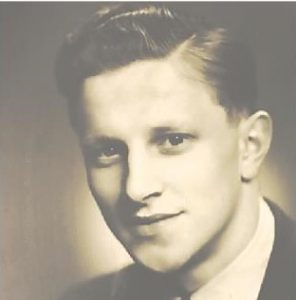
Charles Lambert Betz – The economic integration of Dutch migrants in Australia
Born: 3 June 1930 (Limburg, The Netherlands)Died: 12 January 2018 (Canberra) Charles was a demographer and public servant who served in Papua New Guinea (1967-72) and Australia thereafter.He was a proud and active member of the Australian Dutch community. Driven mostly by the desire to improve their material position Dutch
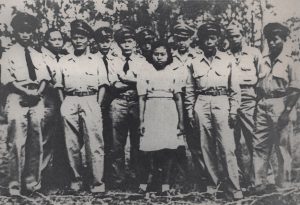
Coosje Ayal – guerrilla fighter studied nursing in Brisbane
Coosje Ayal, born in 1926 in the Moluccas, Western New Guinea, became a notable figure for her resistance efforts during World War II. Adopted by her aunt and uncle, who was a civil servant of the Dutch colonial government, she attended a Dutch school and learned the language. When the

More than 150 Dutch companies established subsidiary operations in Australia
By: Pierre van der Eng Several Dutch companies have operations in Australia today. The members of the Netherlands Chamber of Commerce in Melbourne and Dutchlink in Sydney include Dutch mastheads like Rabobank, Randstad, ING, Heineken and Vopak. Australia has long been relatively open to inward investment by foreign companies. In
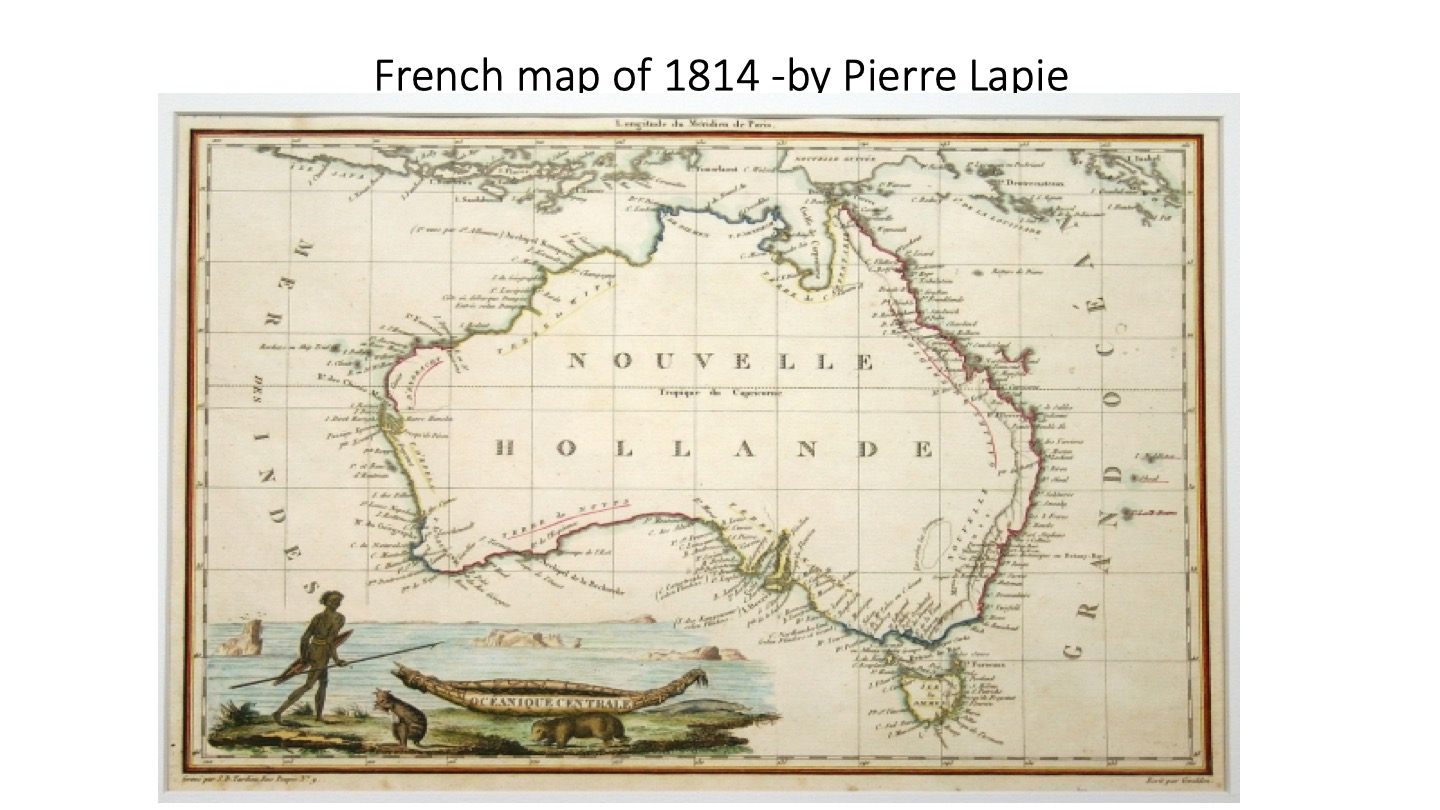
Dutch Australians at a Glance (DAAAG)
Introduction DAAAG was created to be an accessible, easy to navigate, multimedia internet service dedicated to the sustainable digital preservation of Dutch Australians’ cultural heritage – for use by scholars, researchers, bureaucrats, journalists, Dutch individuals and other digital end users worldwide. DAAAG is an initiative of the History of Migration
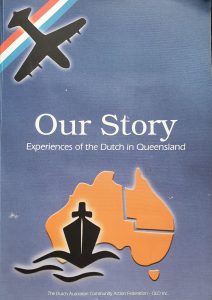
Our Story – Experiences of the Dutch in Queensland
To ensure that the stories of Dutch migrants would be preserved for future generations, the former Dutch-Australian Community Action Federation Qld Inc. (DACA) published a 208 page book ‘Our Story — Experiences of the Dutch in Queensland’ in 2001. Editors: Annelies Zeissink, DACA-President and Rob-Jan Mynarends. The book presents personal

The cartographic migration of Wesel(s) Eijland – Dr. Jan Tent
The Wessel Islands group off the north-eastern coast of Arnhem Land has a rather abstruse history in terms of its naming and ultimate cartographic location. Cartographic evidence, and some primary documentary evidence points to a Wesel(s) Eijland initially referring to an island off the southern coast of present-day West Papua.
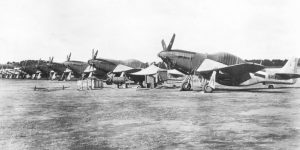
The NEI Personnel & Equipment Pool Squadron Canberra – Bundaberg
The establishment of the NEI Personnel & Equipment Pool (PEP) Squadron, initially stationed at RAAF Base in Canberra, resulted from the need to allow Netherlands East Indies (NEI) crews to recover and prepare for upcoming operations after completing their operational tours. Additionally, they required a base to accommodate spare aircraft
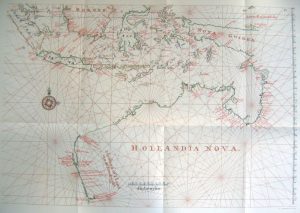
The last VOC exploration voyage to Australia – 1756
The text below is a brief summary of a report titled “EXPLORATORY VOYAGE OF THE SHIPS RIJDER AND BUIS, COMMANDED BY LIEUTENANT JEAN ETIENNE GONZAL AND FIRST LAVIENNE LODEWIJK VAN ASSCHENS, TO THE GULF OF CARPENTARIA.” This report was submitted by Gerrit de Haan, the “Master Cartographer” at Batavia, on

Clogball: Remembering the 38 Dutch football clubs of Australia
From the book Clogball – The Dutch and Soccer in Australia. A migrant Story. By Adam Muyt If you think the Dutch have never won a World Cup you’re mistaken: Holland won a World Cup back in the 1950s. Huh? More than 1.25 million European immigrants poured into Australia in the

Results DIMEX (Dutch Immigrant’s Experiences) surveys – 2004 and 2018
In 2004, volunteers from the DACC undertook the first Dutch Immigrant’s Experiences (DIMEX) survey. This first survey aimed to investigate several aspects of Dutch emigration to Australia. Key topics covered by the survey included: main reasons for emigration; % house ownership, % naturalised as Australians, when and why; membership of

The 1705 van Delft expedition to northern Australia: a toponymic perspective – Dr. Jan Tent
During the 17th and 18th centuries the Dutch were quite active in exploring the western and northern coastlines of the Great Southland. Of one of these expeditions, conducted by Maerten van Delft in 1705, intelligence is limited and it is infrequently mentioned in the canon of Australia’s exploration. The only

The curious Van Dijk map of the Gulf of Carpentaria – Dr. Jan Tent
In 1859 the Dutch historian, L.C.D. van Dijk published a book on the voyages of discovery made by Jan Carstenszoon in 1623 and Jean Etienne Gonzal in 1756 to the Gulf of Carpentaria. The book contains a commentary of the two voyages as well as a copy of Carstenszoon’s journal.
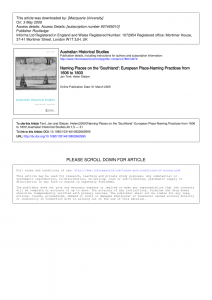
Naming Places on the ‘Southland’: European Place-Naming Practices from 1606 to 1803
The history of charting Australia’s coastline is well documented from most perspectives,but not from a toponymic standpoint. Between 1606 and 1803, some nine hundredEuropean placenames were bestowed along the Australian coast. Authors Jan Tent and Helen Slatyer report here on an investigation and analysis of the place-naming practices of the
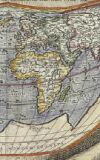
Naming places: Dutch voyagers and toponyms in the fifth part of the world, 1616-1722
Some of the first Europeans to venture into the southern Pacific Ocean were the Dutch during the 17th and early 18th centuries. The linguistic legacy of these expeditions can be found in a small number of Dutch words adopted into Polynesian languages as well as toponyms bestowed by them. The
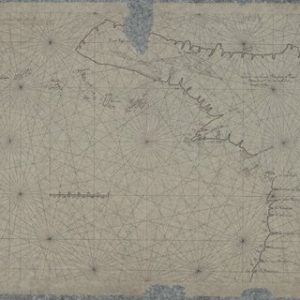
Moent and Dubbelde Ree: Two of Australia’s First Recorded Placenames – Dr. Jan Tent
The year 2006 marked the quatercentenary of the first known European charting of any part of the Australian coastline, when the Dutch mariner Willem Janszoon explored 300 kms of the north-west coast of Cape York Peninsula. He bestowed seven placenames, two of which, Moent and Dubbelde Ree have ambiguous meanings
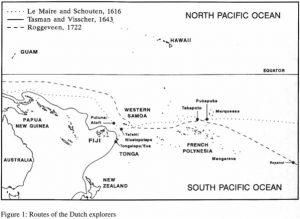
Early Dutch loanwords in the South Pacific
The Polynesian islands share in common the fact that the first European language they came into contact with was the English brought first by Captain Cook, spread by whalers and traders and later consolidated by missionaries. The purpose of the paper below is twofold. First, the authors will present evidence
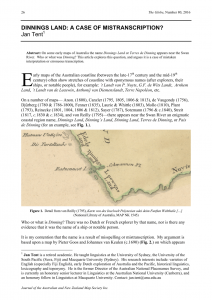
Dinnings land: a case of mistranscription? – by Dr. Jan Tent
On some early maps of Australia the name Dinnings Land or Terres de Dinning appears near the Swan River. Who or what was Dinning? This article explores this question, and argues it is a case of mistaken interpretation or erroneous transcription. “The crucial word in the description is duyning. What
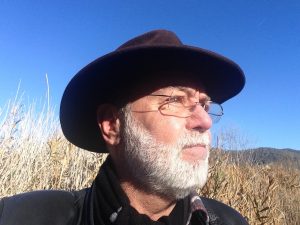
Dutch names in Australia – Linguist Dr. Jan Tent
Dr Jan Tent was born in Amsterdam, his parents originating from Groningen. Jan’s father worked for IBM in Amsterdam. In 1957 his father was made production manager of the IBM typewriter and punch card plant in Lidcombe (Sydney). The appointment was supposed to be for two years but stretched out
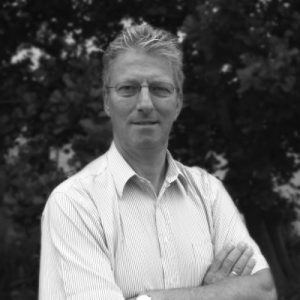
Catalogue of an exhibition (in Groningen) about the history of Australia – 1988
Het onbekende Zuidland naderbij’ by Jaap van der Veen is a catalogue of an exhibition about the history of Australia, the Aborigines and the Dutch explorers and emigrants. It is published by Volkenkundig Museum ‘Gerardus van der Leeuw’ in Groningen in 1988. It contains contributions from Don Grimes and other

Dutch emigration literature in Australia
In previous months we have highlighted Dutch literature in Australia and we continue this month with another collection of interesting and often forgotten books. However, some will recall nostalgic memories from those who arrives as children or as emigrants from the 1950s and 1960s. Land in de verte – 1952
The DACC Library Collection
The DACC Library has a collection of books, magazines, CD’s, DVD’s and VHS tapes. Most are not yet in the online data base. The table below lists the categories and the number of books and magazines in each category. Please contact the DACC for further information.
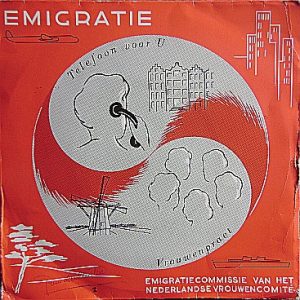
Emigratie Commissie of the Nederlandse Vrouwen Comité
The Emigratie Commissie was a committee of the Nederlandse Vrouwen Comité (NVC – Dutch Women’s Council). The Emigration Commission of the Dutch Women’s Council, was an organisation in the Netherlands that focused on assisting women and families with the process of emigrating to other countries. The committee operated during the

Stichting Landverhuizing Nederland (Foundation for Emigration Netherlands) – 1913-1967
The Nederlandse Vereniging Landverhuizing (Netherlands Association Emigration) was established in 1913 to promote Dutch emigration. It merged with the Emigration Centre Holland (Emigratie Centrale Holland) in 1931 and formed the Netherlands Emigration Foundation (Stichting Landverhuizing Nederland). The foundation was renamed the Dutch Emigration Service (Nederlandse Emigratiedienst) in 1952. The foundation
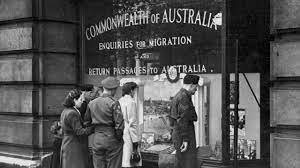
The Return of Dutch Migrants from Australia, New Zealand and Canada – 1983
The book The Return of Dutch Migrants from Australia, New Zealand and Canada is a research report written by Wim Blauw and Joed Elich and published by the Netherlands Interuniversity Demographic Institute (NIDI) in 1983. The book is based on a survey of 1,200 Dutch migrants who returned to the
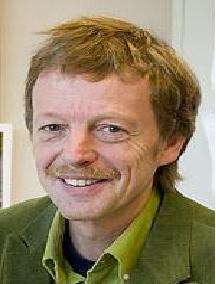
Investigating Lexical Attrition in Long-Term Dutch Expatriates in Australia: A Study on First Language
Dissertation by Ton Ammerlaan (born 1960) Radbout University Nijmegen – 1996 Introduction: Language attrition, the gradual loss of one’s first language (LI) proficiency due to decreased exposure and use, has been a topic of interest in sociolinguistic and linguistic research. This article focuses on the nature of variables influencing lexical
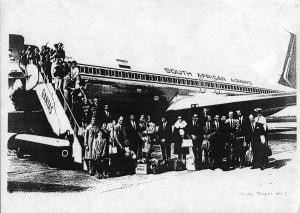
Information from the Dutch Emigration Service – 1953
Nederlandse Emigratiedienst, Australië. Dagelijks leven van emigranten tegen de achtergrond der Australische economie. Recente emigrantenbrieven, aangevuld met enkele belangrijke artikelen, welke de laatste tijd over Australië het licht zagen, themanummer van: Leven en Werken in den Vreemde. Actualiteiten ten behoeve van de Emigratie-voorlichting. Uitgave Nederlandse Emigratiedienst, 12 sept. 1953 This

Study: Why potential emigrants cancelled their plans – 1959
Regeringscommissaris voor de Emigratie, Bureau Onderzoekingen, Annulering van emigratie. Een onderzoek bij 500 Australië-units naar de redenen, waarom zij van emigratie afzagen. ’s-Gravenhage: Regeringscommissaris voor de Emigratie, Bureau Onderzoekingen, 1959. This is a title of a report published in 1959 by the Regeringscommissaris voor de Emigratie, Bureau Onderzoekingen (Government Commissioner for Emigration,

Geschreven portretten van Nederlandse emigrantenpriesters in Australië – 1994
A Book Review: Written Portraits of Dutch Migrant Priests in Australia The book Geschreven portretten van Nederlandse emigrantenpriesters in Australië, translates to Written portraits of Dutch migrant priests in Australia in English. It was edited and adapted by J.W.P. Elferink from the original manuscripts of Theo van der Meel, a

Emigration survey: Inpakken en wegwezen? – 1981
Ministerie van Sociale Zaken, Inpakken en wegwezen? Een onderzoek naar kenmerken en motieven van emigranten naar Australië, Canada en Nieuw-Zeeland. Onderzoek verricht door het Ministerie van Sociale Zaken met medewerking van het Instituut voor Psychologisch Marktonderzoek te Rotterdam en de Nederlandse Stichting voor Statistiek te ’s-Gravenhage. Den Haag: Ministerie van

Thesis: De teruggekeerde emigrant (The Returned Emigrant) – 1966
The document De teruggekeerde emigrant (The Returned Emigrant) is an unpublished thesis written by Heikina R. Scholten in 1966. It is a qualitative study on the reasons for return to the Netherlands of Dutch emigrants from Australia for the purpose of information provision. The thesis was submitted to the Haagse
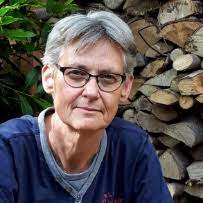
‘Invisibility and selectivity’. Dutch migration in the 19th and 20th century – 2010
Marijke van Faassen is a Dutch historians who has been involved in several research projects and publications related to migration history. Marijke is a senior researcher at the Huygens Institute for the History of the Netherlands, and has a specialisation in (digital) scholarly editing. She has worked on various topics
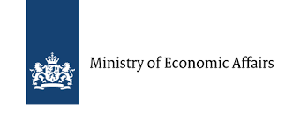
Report of the orientation trip to and through Australia and New Zealand – 1957
A. Drost & B.J. Spitholt, m.m.v. J.M. van Delden, Verslag van de oriëntatie-reis naar en door Australië en Nieuw-Zeeland, typescript, 1957 (Koninklijke Bibliotheek Den Haag, sign. NL 94 H 1000). This is a report of a trip to Australia and New Zealand by three Dutch officials: A. Drost, B.J. Spitholt,
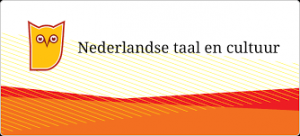
Dr. Cornelis Wouters and the Dutch language
In the 1950s, Dr. Cornelis Wouters advocated for more attention to be given to the culture of the countries from which many immigrants had settled in Australia, in the country’s education system. He argued that this could be achieved by broadening the curriculum to include lessons in languages other than
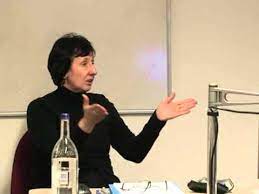
The Effect of Mixed Marriage on Language Shift in the Dutch Community in Australia – 1980
This thesis was written by Anne Pauwels, a linguist and professor. The main focus of the thesis is to examine how mixed marriages between Dutch- speaking and English-speaking Australians impact on the use and maintenance of the Dutch language in Australia, within the family and the Dutch community. The project
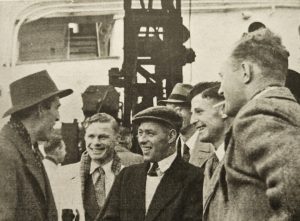
Dairy cows and dairy products in Dutch-Australian emigration literature, 1945-1965
Melkkoeien en zuivel in Nederlands-Australische emigratieliteratuur, 1945-1965 This is the original article by Prof. Ton van Kalmthout with graphics, pictures and source references in Dutch. Below that is a PDF of the article’s English translation. Author: Professor dr. A.B.G.M. (Ton) van Kalmthout – senior-onderzoeker Literatuurgeschiedenis | Koninklijke Nederlandse Akademie van
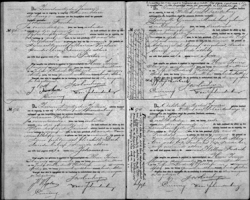
Unpublished transcript: “Emigration from the Netherlands” by Professor Geijl
This particular work is not widely known or may have limited information available, it doesn’t appear in the overview of his extensive list of publications. It is a typescript with handwritten additions, and it is located in the Koninklijke Bibliotheek (National Library) in The Hague, under number NL 94 B
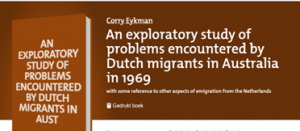
Study: Dutch Migrants in Australia: Challenges and Experiences – 1969
A study conducted by Corry Eykman (Eijkman) in 1969 explored the challenges and experiences of Dutch migrants in Australia. The study found that Dutch migrants faced a number of challenges, including the language barrier, the different climate, the unfamiliar culture, the loneliness of being away from their family and friends,

Dutch Women Share Their Emigration Stories – 1960
A book published by the Emigratie Commissie van het Nederlandse Vrouwen Comité (Emigration Committee of the Dutch Women’s Committee) features writings by emigrant women who share their experiences from afar. The book, titled “Ons tweede huis: Emigrantenvrouwen schrijven van verre” (Our Second Home: Emigrant Women Writing from Afar), was released
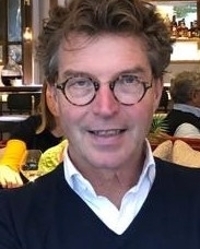
Dutch emigration literature with regard to Australia 1946 – 1992
The following list of Dutch emigration literature (in a broad sense) includes book titles that specifically relate to emigration of Dutch people to Australia. The list, compiled by Ton van Kalmthout, does not claim to be exhaustive, but forms a first step towards a further inventory of reading materials available
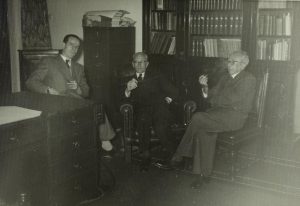
Augustin Lodewyckx introduced the first university course in Dutch in Australia
Augustin Lodewyckx (1876-1964) was a Belgian scholar and professor who made significant contributions to the study of modern languages in Australia. He was born on December 8, 1876, in Booischot, Belgium, the son of Joannes Lodewijckx, a farmer, and his wife, Maria Dymphna Maes. After completing his secondary education in
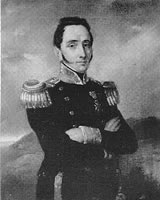
The Colonial Warship the Doerga explored northern Australia (1825-1826)
In the 1820s the Dutch Colonial naval vessel Doerga (Dourga) the Dutch was sent by Netherlands East indies Government to northern Australia to establish Dutch claims to the region and to investigate the trepang trade. The voyages of the Dutch brig of war Dourga, were recorded by its Captain Dirk

Frank Broeze – maritime historian
Franklin Jan Aart Broeze, who went by Frank Broeze, was a prominent maritime historian and academic who was born on January 20, 1945, in Rijswijk, Netherlands. Broeze grew up in the Netherlands and attended Leiden University, where he earned his Ph.D. in maritime history. Frank Broeze emigrated to Australia in
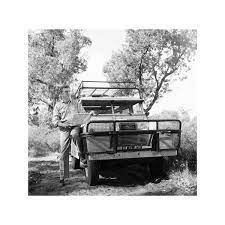
Anthropologist Mark de Graaf
Mark de Graaf came to Australia in 1958. He studied a Claremont Teachers College and the University of Western Australia to become a geology teacher. He took part in the Perth Drama Festival and the first live television show produced in Perth. He also worked ads a part time actor
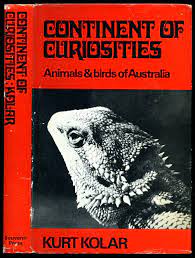
Ornithologist Jonkheer Gerard Frederick van Tets
Jonkheer Gerard Frederick van Tets, also known as Jerry van Tets, was a renowned ornithologist and paleontologist who made significant contributions to the study of birds and prehistoric life. He was born on January 19, 1929, in London, England, to Dutch parents, jhr. Hendrik Barthout van Tets, heer van Goidschalxoord,
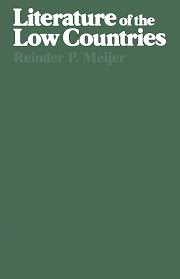
Reindert Meijer on Dutch Literature
R.P. Meijer was born on 18 January 1926 in Amsterdam. He studied Dutch at the University of Amsterdam where he graduated in Dutch language and literature in 1950. He obtained his PhD in Dutch literature in 1958. Meijer has taught and researched at various universities in the Netherlands and abroad.
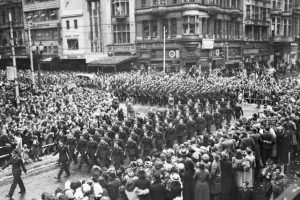
Three unique Dutch movies during WWII from around Australia
Amateur movies made by Mr. Arie Berger. Source Netherlands Ministry of Defence Movie #3 – 1943 Beeldbank – Department of Defence – Netherlands Movie #4 1943 -1944 Beeldbank – Department of Defence – Netherlands Movie #5 1945 -1946 Beeldbank – Department of Defence – Netherlands See also: The Dutch at

A short overview of the Dutch exploration of Torres Strait
Scroll down and a map shows up with New Guinea connected to Australia but a small missing part on that map shows where in this perspective the Torres Strait could have been. See also: The Colonial Warship the Doerga explored northern Australia (1825-1826) Dutch Explorers in the Gulf of Carpentaria

Proposal to establish a Dutch settlement in South Australia (1717)
Jean Pierre Purry was a Swiss explorer who presented a plan to the Dutch Governor General of the Dutch East Indies in Batavia (now Jakarta, Indonesia) in 1717 to establish a settlement in Australia. His plan was to settle in the vicinity of Eyre Peninsula in South Australia. Purry was

Rupert Gerritsen: Historian in Dutch-Australian past and Vietnam activist
Rupert Gerritsen (1953 – 3 November 2013) was born in Geraldton, Western Australia, to Dutch parents. He became an Australian historian who made significant contributions to the fields of archaeology, anthropology, and environmental history. He published extensively on the prehistory and history of Australia, particularly in relation to Indigenous cultures
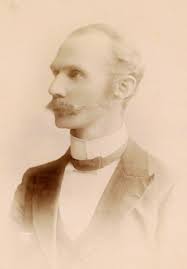
Willem Siebenhaar social activist and writer (1863-1937)
He was born in The Hague on July 28, 1863 and developed a lifelong interest in chess at the age of fifteen and was exposed to Ferdinand Domela Nieuwenhuis – a prominent socialist figure in the Netherlands who served as the country’s first elected socialist Member of Parliament. After graduating
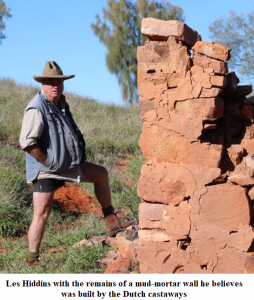
Was there a Dutch settlement in Central Australia in the 18th century?
There are a number of stories about a Dutch settlement in central Australia in the 18th century. However, there is no concrete evidence to support the claim that a group of Dutch settlers established a colony in the region. This article offers an introduction to this topic and canvasses some
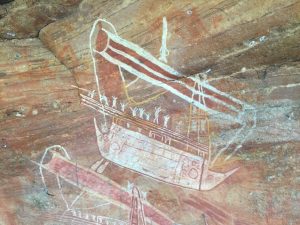
Overfishing and Dutch regulations saw an increase of Makassar fisherman in Australia.
Makassar centre of the trepang fishing Trepang fishing, also known as sea cucumber fishing, is a type of fishing that involves the collection of sea cucumbers, which are a type of marine invertebrate. Sea cucumbers are typically found on the ocean floor and are harvested for a variety of purposes,
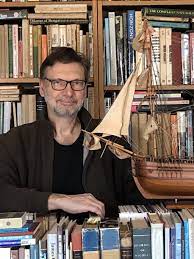
Dr. Edward Duyker, historian, author.
Dr Edward Duyker was born in 1955 to a father from the Netherlands and a mother from Mauritius. His mother has ancestors from Cornwall who emigrated to Adelaide, South Australia, in 1849. Edward’s father Herman, was born in Schaesberg, Limburg and emigrated to Australia in 1950 and arrived here on
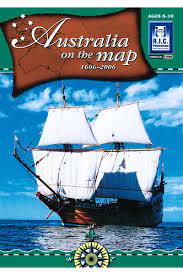
Australia on the Map 1606-2006
Australia on the Map (AOTM) is the history and heritage division of the Australasian Hydrographic Society (AHS). This division consequently focuses on important themes in Australian hydrographic history and heritage, including maritime exploration and the mapping of Australia, and, where relevant, New Zealand. Before its incorporation into the Australasian Hydrographic
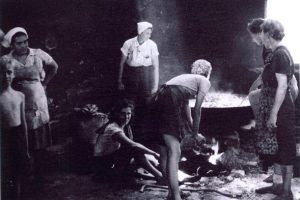
Evacuees and Refugees from Netherlands East Indies recuperating in Australia after WWII
After the surrender of Japan there were some 100,000 European people in the Japanese camps, many of them were close to starvation. An agreement between Australia and Netherlands East Indies governments led to the formation of the Netherlands Indies Welfare Organisation for Evacuees (NIWOE). The organisation emerged out of the
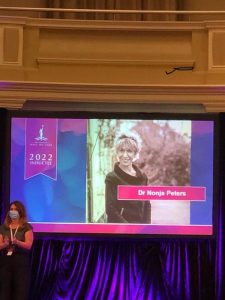
Nonja Peters: Historian, anthropologist, museum curator and social researcher
Dr Nonja Peters is an historian, anthropologist, museum curator and social researcher whose expertise is transnational migration (forced and voluntary) and resettlement in Australia. She is the author of several books, museum exhibitions, journal articles, TV documentaries, and government reports. Her achievements and dedication towards raising awareness of the post-war
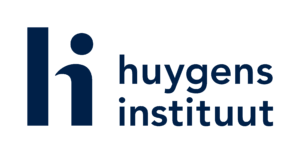
Huygens Institute – The Netherlands
The Huygens Institute aims to make Dutch history and culture more inclusive. It also provides access to primary source material and text editions on which to base further analytical and interpretive research. In addition, the Huygens Institute takes the lead in developing innovative methods, tools and sustainable digital infrastructure. The
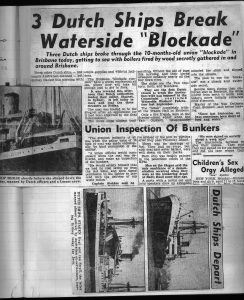
Black Armada: Australian Boycott of Dutch shipping WWII
After the Japanese invasion of Netherlands East Indies, some 20,000 Dutch people fled to Australia, the majority were Indos. They were not well treated and the Australian Unions started to fight for their rights. As they became involved they understood these people wanted independence from the Netherlands. When, after the War, the Dutch wanted to recolonise NEI the Unions blocked all Dutch transport from Australia.
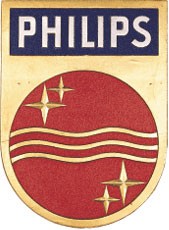
Philips Electronics Pty Ltd was the largest company from The Netherlands in Australia
Temporary display at Juliana Village, Miranda, Sydney – April 2024 Philips Electronics Pty Ltd Pierre van der Eng The predecessor of Philips Electronics Pty Ltd in Sydney was one of the largest Dutch companies that operated in Australia. In 1970 when it had 13,000 employees in various locations in Australia.
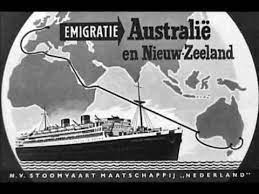
Dutch immigration to Australia, history, stats and other resources
History Already in the 1800 we see Dutch people settling in Australia. A rather famous early immigrant was Willem Hendrik Paling who settled in Sydney in 1853. He established music stores in Sydney and Brisbane, wrote music, was a teacher and a performer. The 1911 caucus lists only 650 Dutch

Dutch involved in marine archaeology in Broome
The Cultural Heritage Agency of the Netherlands (RCE) is currently involved in one project in Australia. In this project, the RCE and the Western Australian Museum in Perth together investigate Dutch amphibious aircraft wrecked in the Australian port city Broome during the Second World War. In the past, the RCE

Revealing colonial interview during visit of Dutch Navy to Sydney in 1910
In 1910 the HNLMS Koningin Regentes undertook a cruise to Australia to show the flag. Lieutenant Pieren was interviewed re the security in the region both in regarding to Japan and the situation in the Netherlands East Indies,
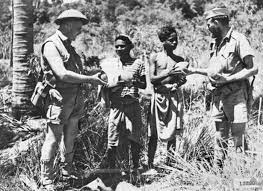
The Battle of Timor – 1942-1943
The Battle of Timor – the Dutch and Australians kept fighting after the surrender of Netherlands East Indies. The bombing of Darwin did bring WWII directly onto the shores of Australia. However, what is less well known is that the reason for the Japanese attack on Darwin and Broome was
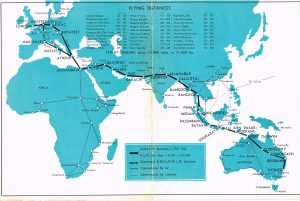
Royal Netherlands Indies Airline – KNILM and its link with Australia
KNILM an early aviation pioneer Koninklijke Nederlandsch-Indische Luchtvaart Maatschappij (in English: Royal Dutch Indies Airways) was the airline of the former Netherlands East Indies (NAI). It was founded on 16 July 1928 as the NILM by a group of 32 Netherlands Indies. KNILM was not a subsidiary of the better-known
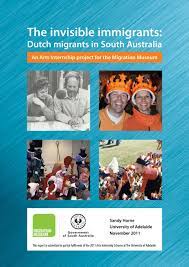
The invisible immigrants: Dutch migrants in South Australia
Introduction to the publication (2011). ‘God made the world but the Dutch made Holland’ is an old saying referring to the way the Dutch shaped their nation by reclaiming land. It is with this same sense of determination that the Dutch applied themselves to the task of assimilating into the
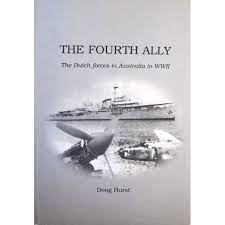
The Fourth Ally – the Dutch forces in Australia during WWII
by Doug Hurst – 2001 The Fourth Ally tells of the Dutch forces who fought from Australia against the Japanese during WW II. Driven by the Japanese from Indonesia (then the Netherlands East Indies), they relocated ships, aircraft and personnel to Australia. They joined with United States, British and Australian

Allies in a Bind – Australia and the Netherlands East Indies in the Second World War
Early in Roger Bell’s book Unequal Allies,he states: ”Relations between the governments of Australia and the United States underwent fundamental changes during 1941-46…Indeed it was not characterized by general bilateral accord on political, defence and economic matters during war time.” These comments can be equally applied to the Dutch/Australian wartime
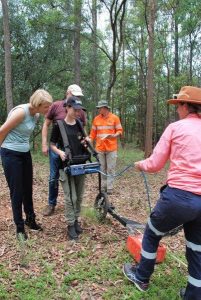
Archaeological research launched at Dutch WWII Camp Columbia Brisbane
Late last year the Honorary Consul of the Netherlands in Queensland Marjon Wind launched the groundwork for the archaeological projected conducted by the University of Queensland at the WWII HQ of the Netherlands East Indies Government-in-Exile at Camp Columbia in Wacol, Brisbane.
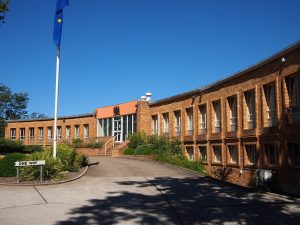
Consuls, Envoys and Ambassadors of the Netherlands in Australia since 1853
Pierre van der Eng, Australian National University It took until 1951 for The Netherlands to establish diplomatic representation in Australia in the form of an accredited ambassador. Depending on the issue, bilateral diplomatic matters were dealt with through the Dutch embassy in London until the 1940s, either through British public
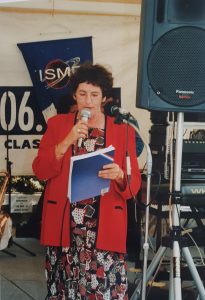
Dutch Migrant History – Queensland
Like everywhere else in Australia there is also a rich history of the Dutch in Queensland. Many Dutch people settled here after WWII. The Netherlands East Indies Government-in-Exile was based in Wacol, Brisbane and that also resulted in Dutch people staying or coming to Brisbane immediately after the war. In
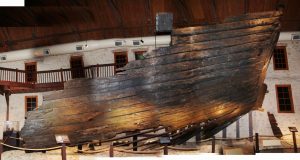
Batavia research at Flinders University Archaeology
Research by Domínguez-Delmás Daly and Flinders Associate Professor Wendy van Duivenvoorde, is carried out on Batavia’s wreck timbers, currently on display at the Western Australian Shipwrecks Museum in Fremantle. Built in Amsterdam in 1628 CE and wrecked on its maiden voyage in June 1629 CE in Western Australian waters, Batavia epitomises Dutch East India

Interview with Anthropologist Ad Borsboom
The interview (podcast) below is in in Dutch Profile Professor Ad Borsboom *Anthropologist; Research area: Aboriginal Australia. *Chair Pacific Studies Radboud University Nijmegen. *Teaching experience at all levels in Anthropology. *Publications for both scientific and general audiences (books, chapters in books, articles), editorials. See f.e. ‘De Clan van de Wilde
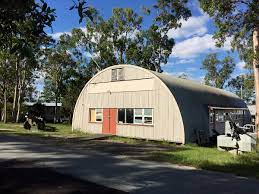
Wacol Migrant Centre Remembered 1949-1987
In the immediate post-War World years, refugees from war-torn Europe were resettled in different places across Australia. By 1949, it is estimated that one-tenth of the American/Dutch/Australian Army’s Camp Columbia area became the Wacol East Displaced Persons Holding Camp. In the early 1950s the camp was developed to become the

Nederlands Nationaal Archief – Emigratie database
In het Nationaal Archief vind je antwoorden op vragen die betrekking hebben op jouw leven, de geschiedenis van Nederland ook in relatie tot andere landen, en de samenleving. We helpen je aan nieuwe inzichten door je toegang te geven tot het nationaal geheugen. De Nederlandse consulaten in Australië hielden een
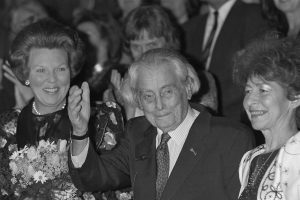
Joris Ivens – Doco Indonesia Calling
Ivens came to Australia in early 1945 as the Netherlands East Indies(NEI) Film Commissioner, to document the re-colonisation effort of the Dutch Indies from Australia. He was employed by the NEI Government Information Service (NIGIS) in Melbourne they had 128 staff—25 of these ‘Indonesians’—(a branch office of three in Sydney),

DACC Paper-based ARCHIVES
The Dutch Australian Cultural Centre was founded in 1983 and gives as its aims and objectives in its mission statement, the collection, preservation, promotion and dissemination of Dutch culture and heritage in Australia. The Centre immediately started the collection of material for the archives and Library and now, after almost

Australische archeologen op zoek naar Nederlands VOC-wrak ‘Fortuyn 16-1-2015
The Fortuyn was a ship built in 1722 and owned by the Chamber of Amsterdam of the Dutch East India Company. The ship was wrecked during her maiden voyage in 1724.[ The ship was 800 tons, had a loading capacity of 280 tons and was 44 meters long. The captain

The Dutch at Archerfield Airport, Brisbane
Australian and Dutch history meet at Archerfield Airport in Brisbane. During WWII this airfield played a critical role for the Dutch military who, after the Japanese armed forces occupied the Dutch colony of Netherlands East Indies (now Indonesia) to neighboring Australia. Over 20.000 people from NEI evacuated to Australia. Poor
